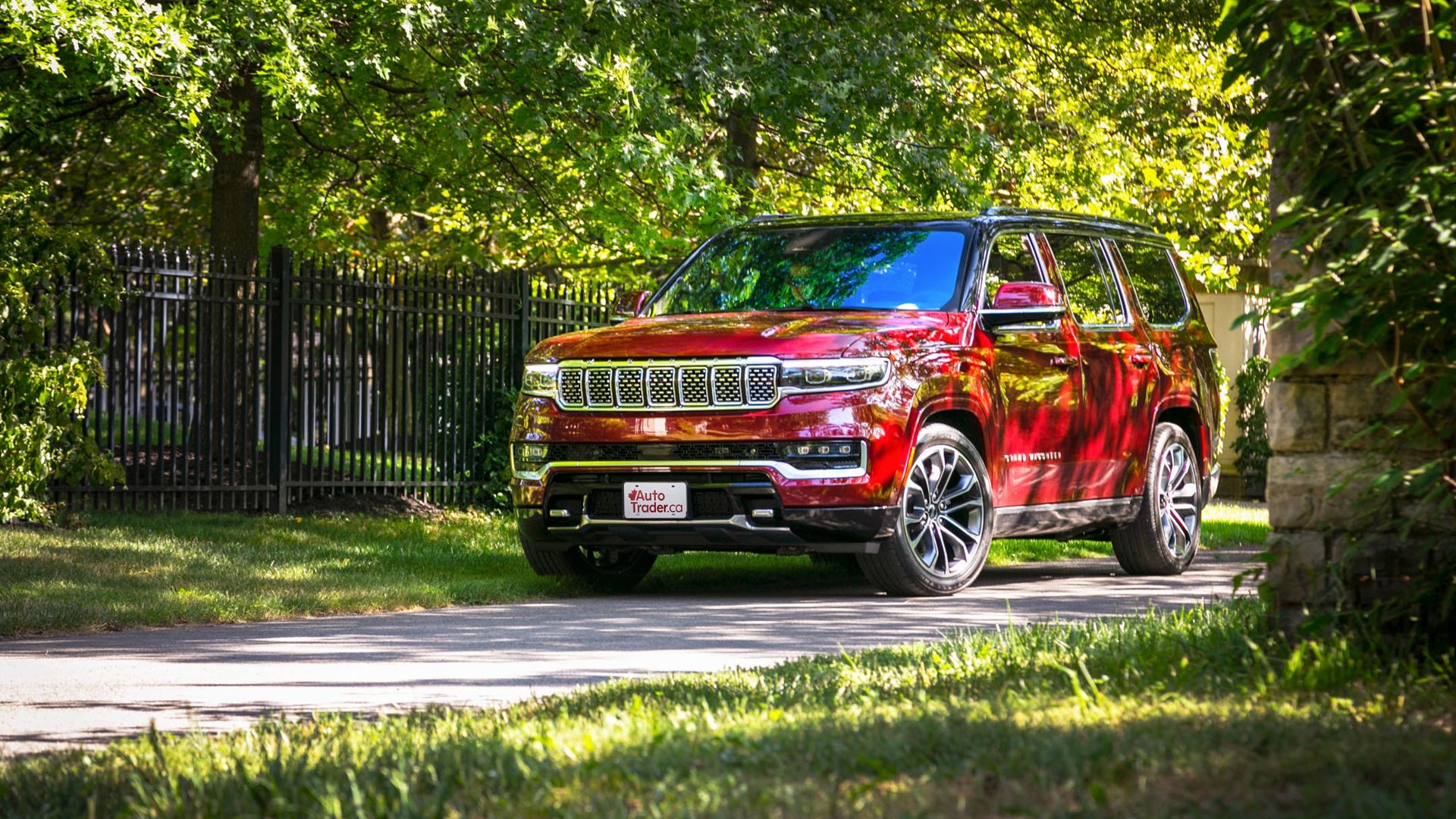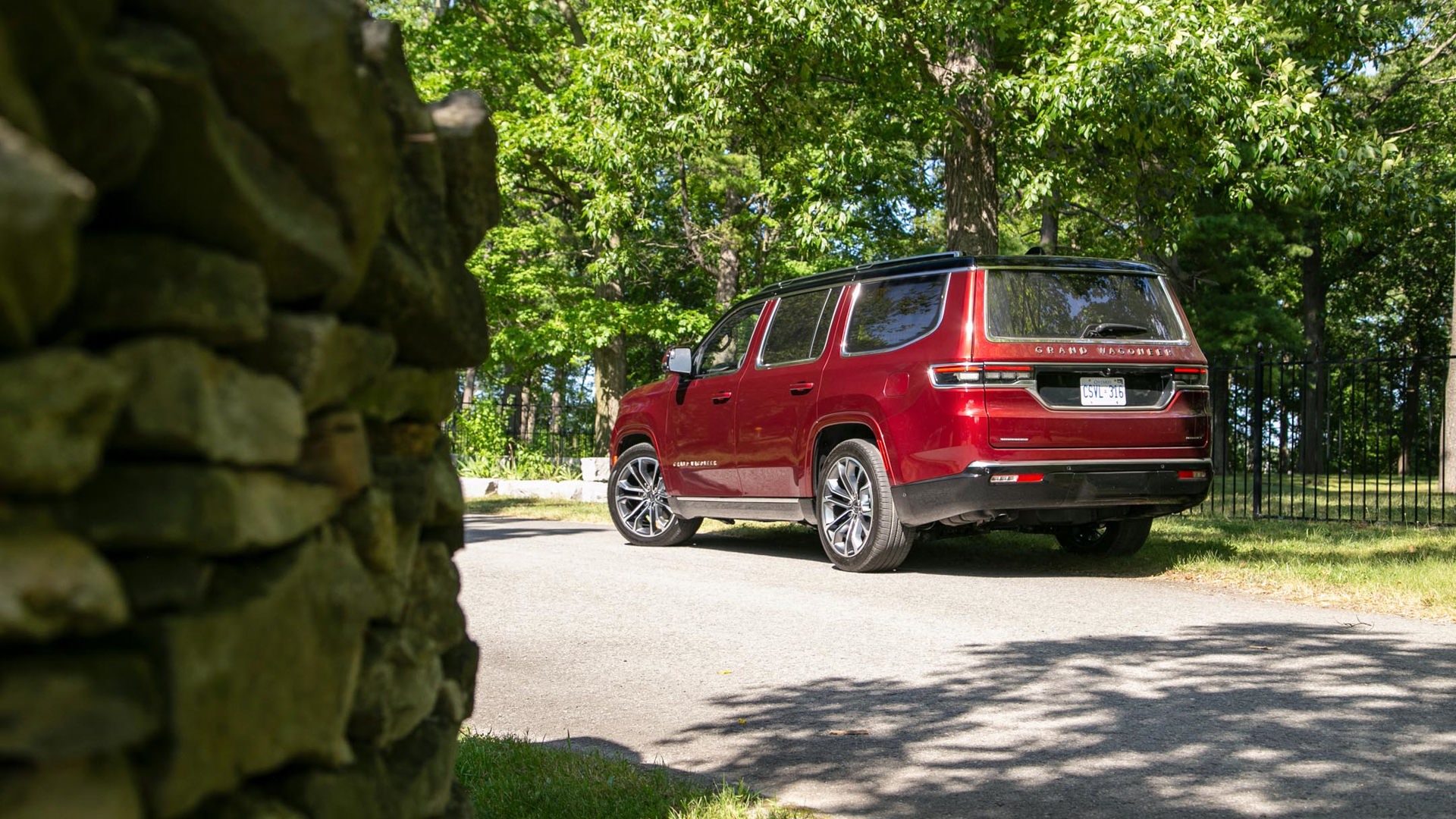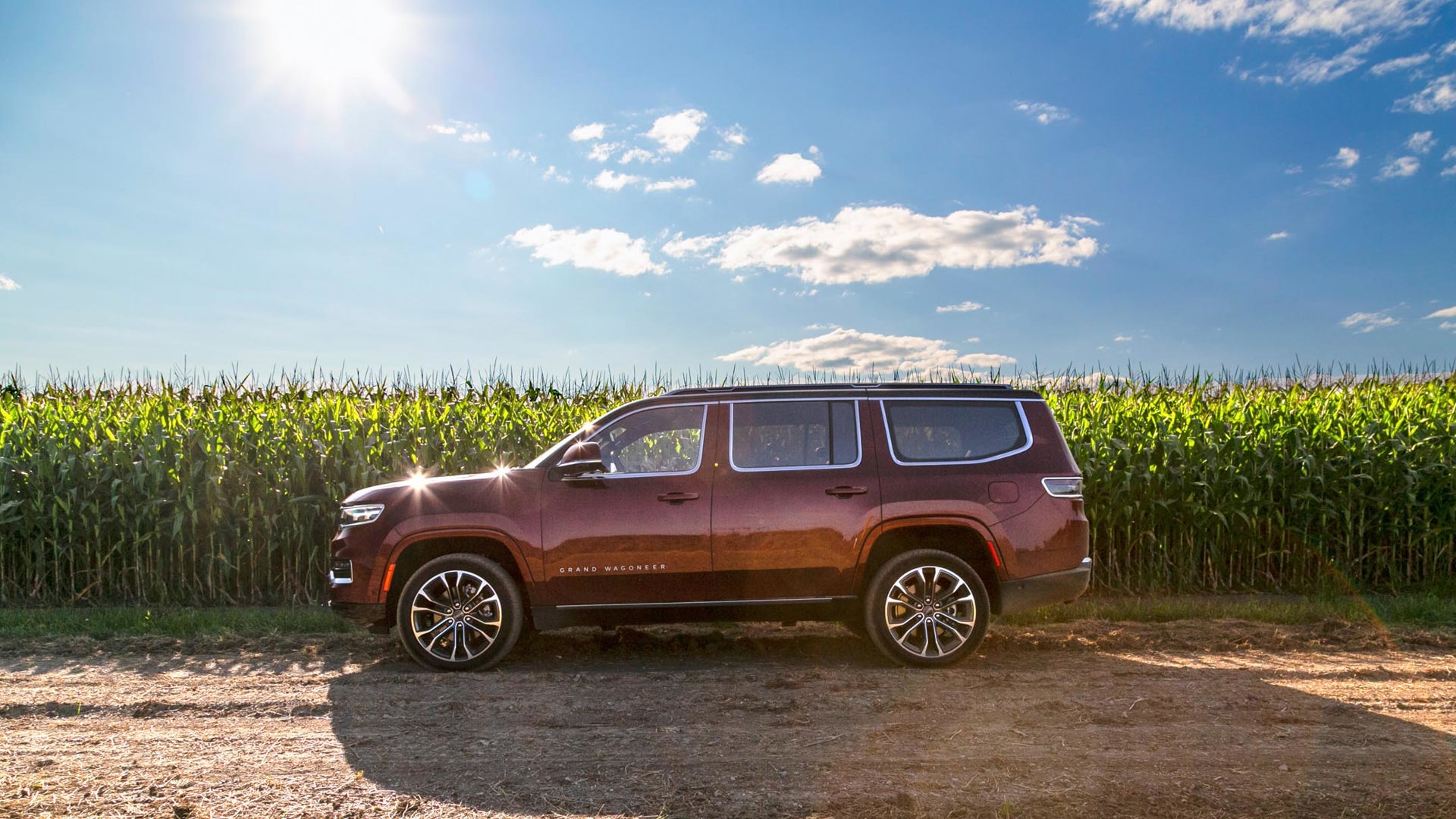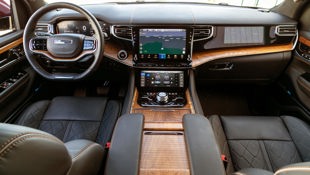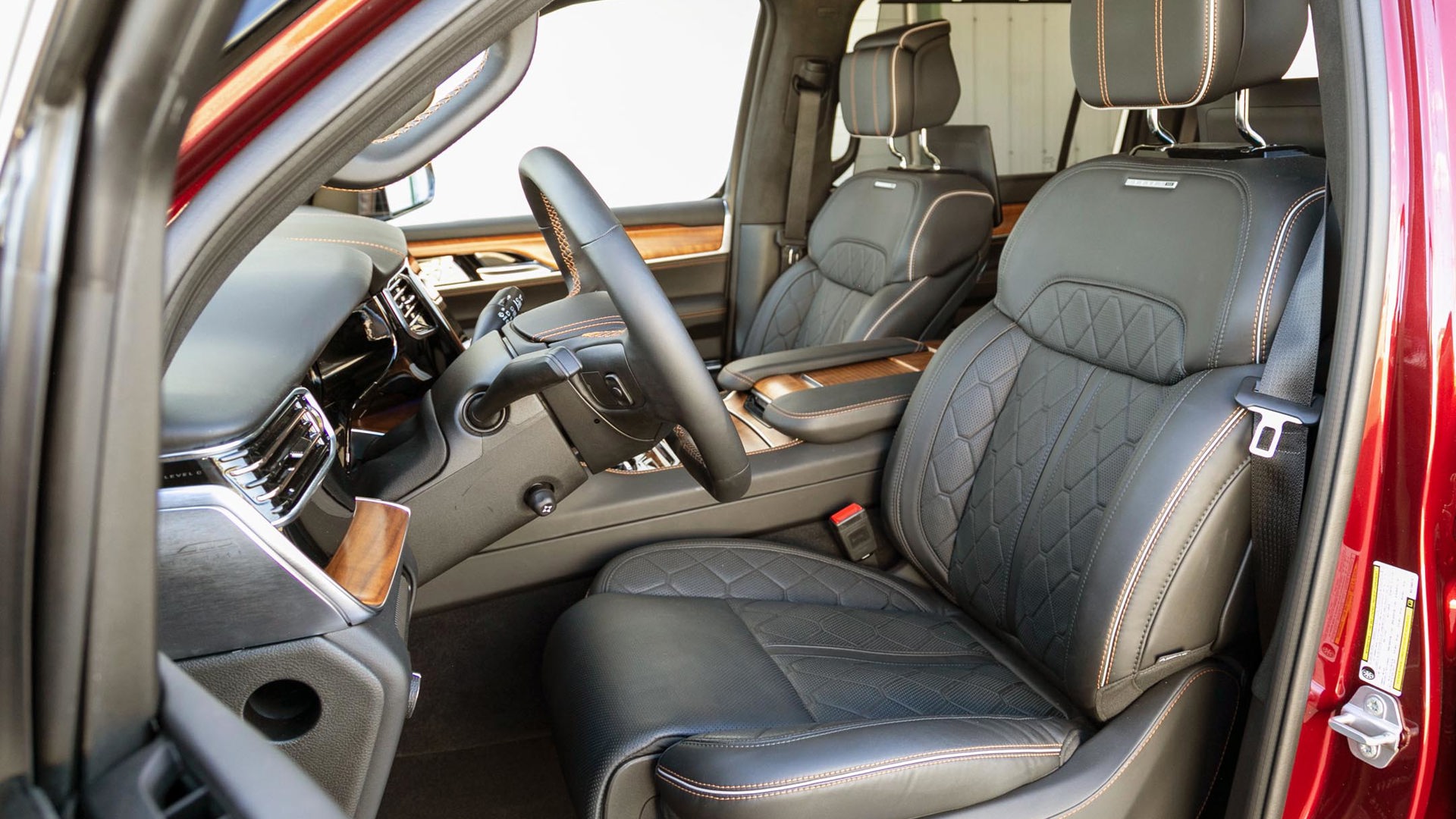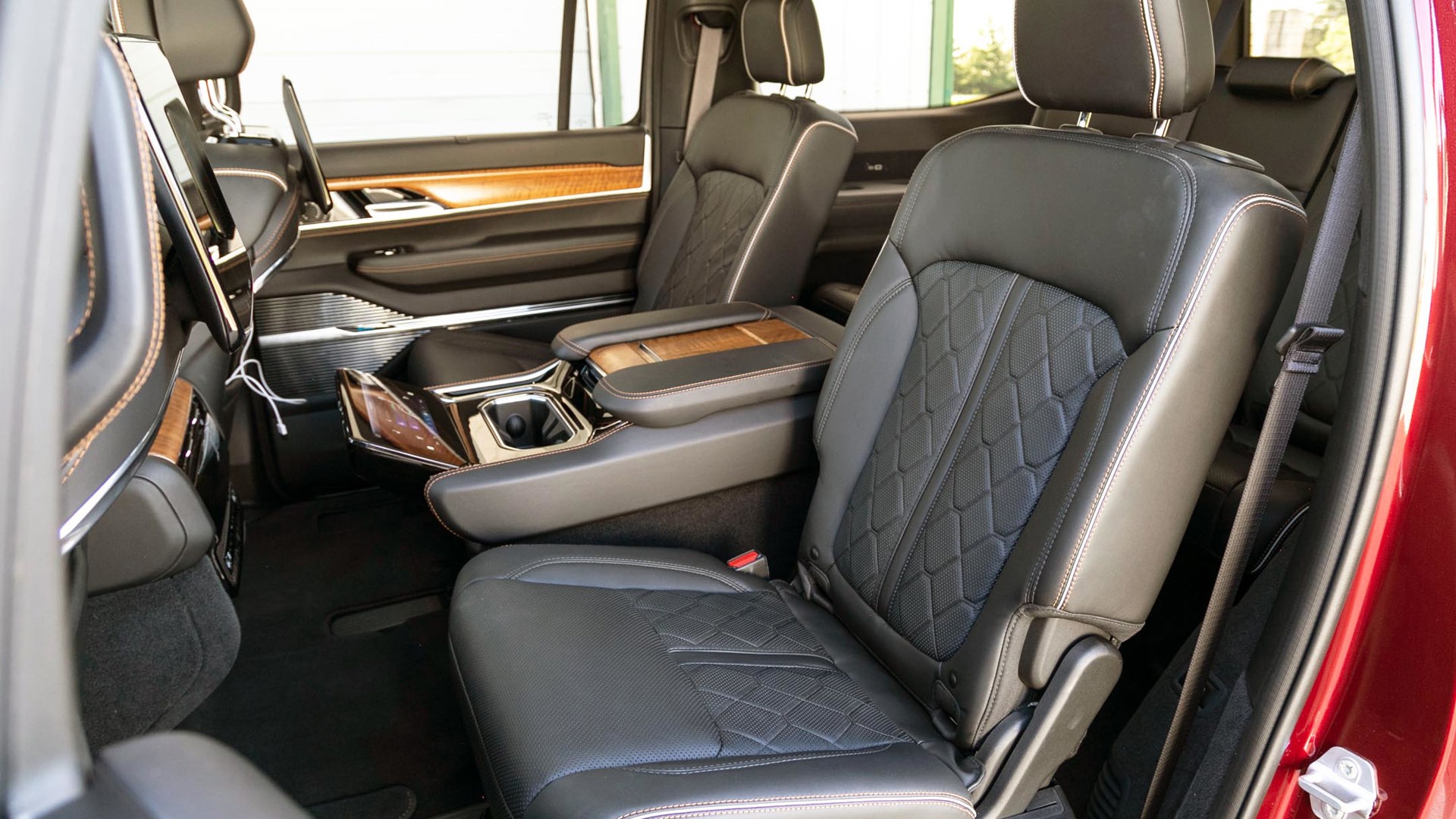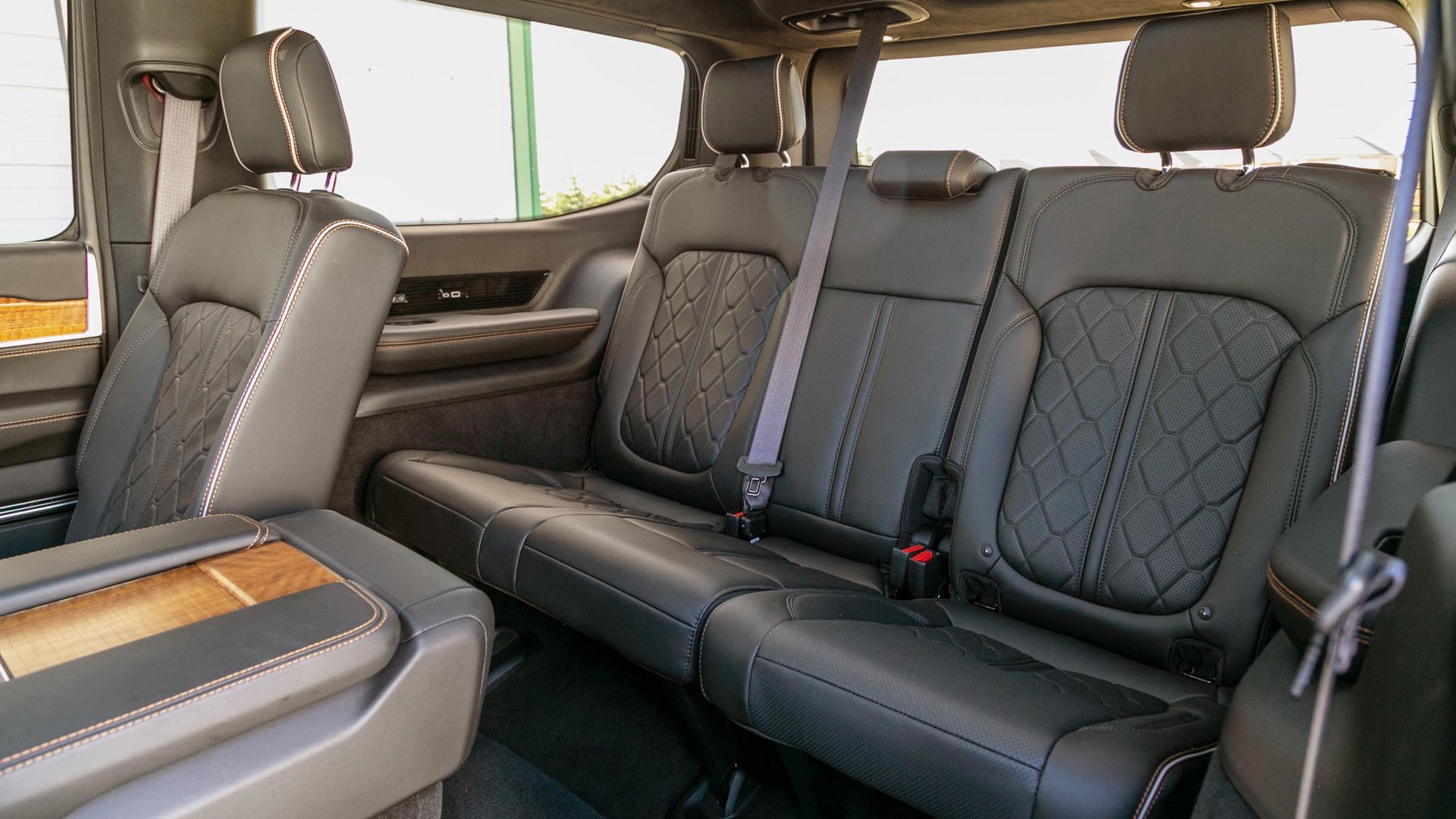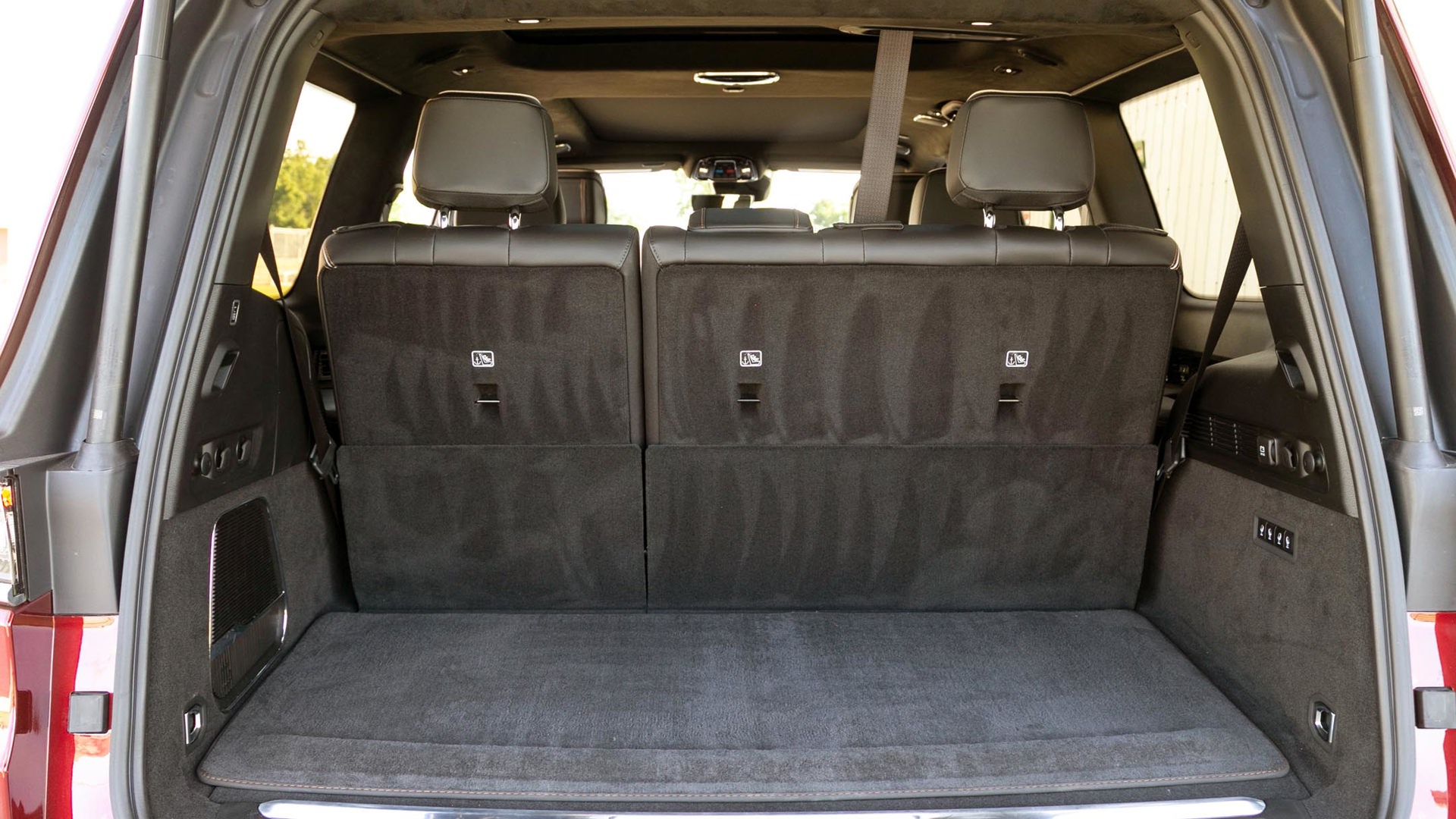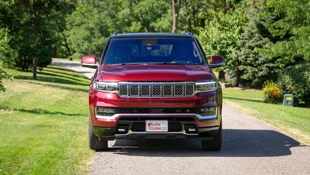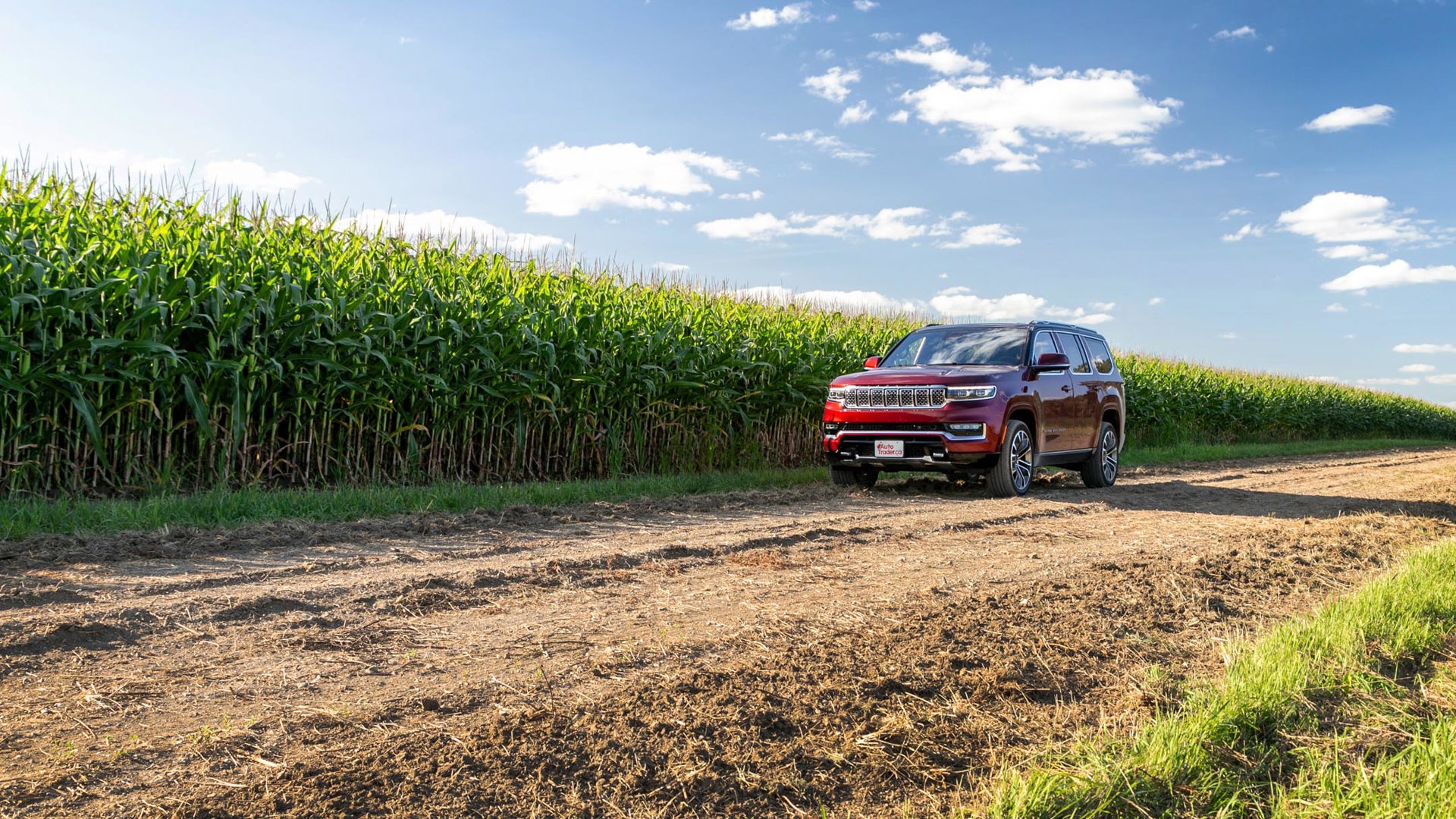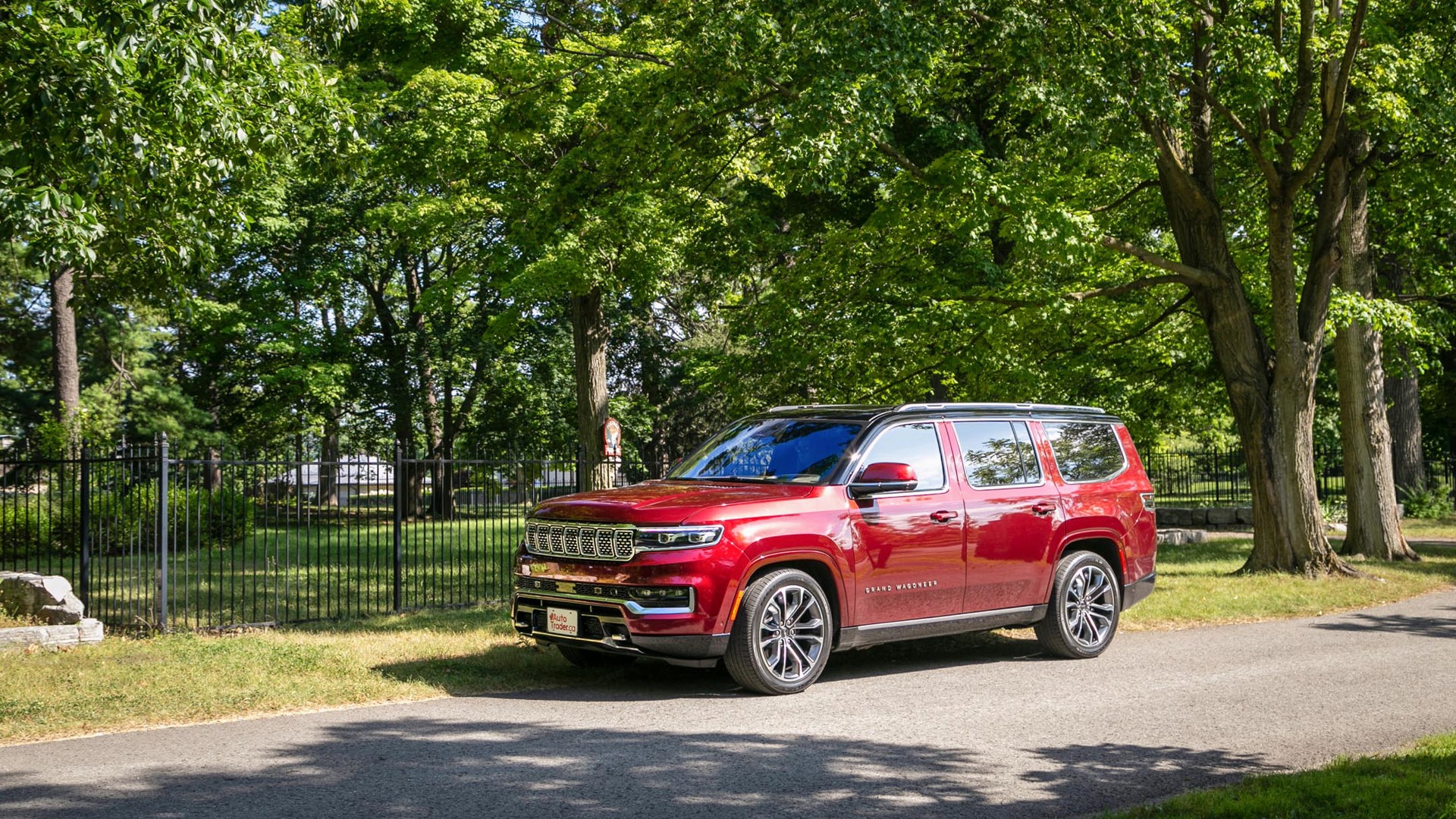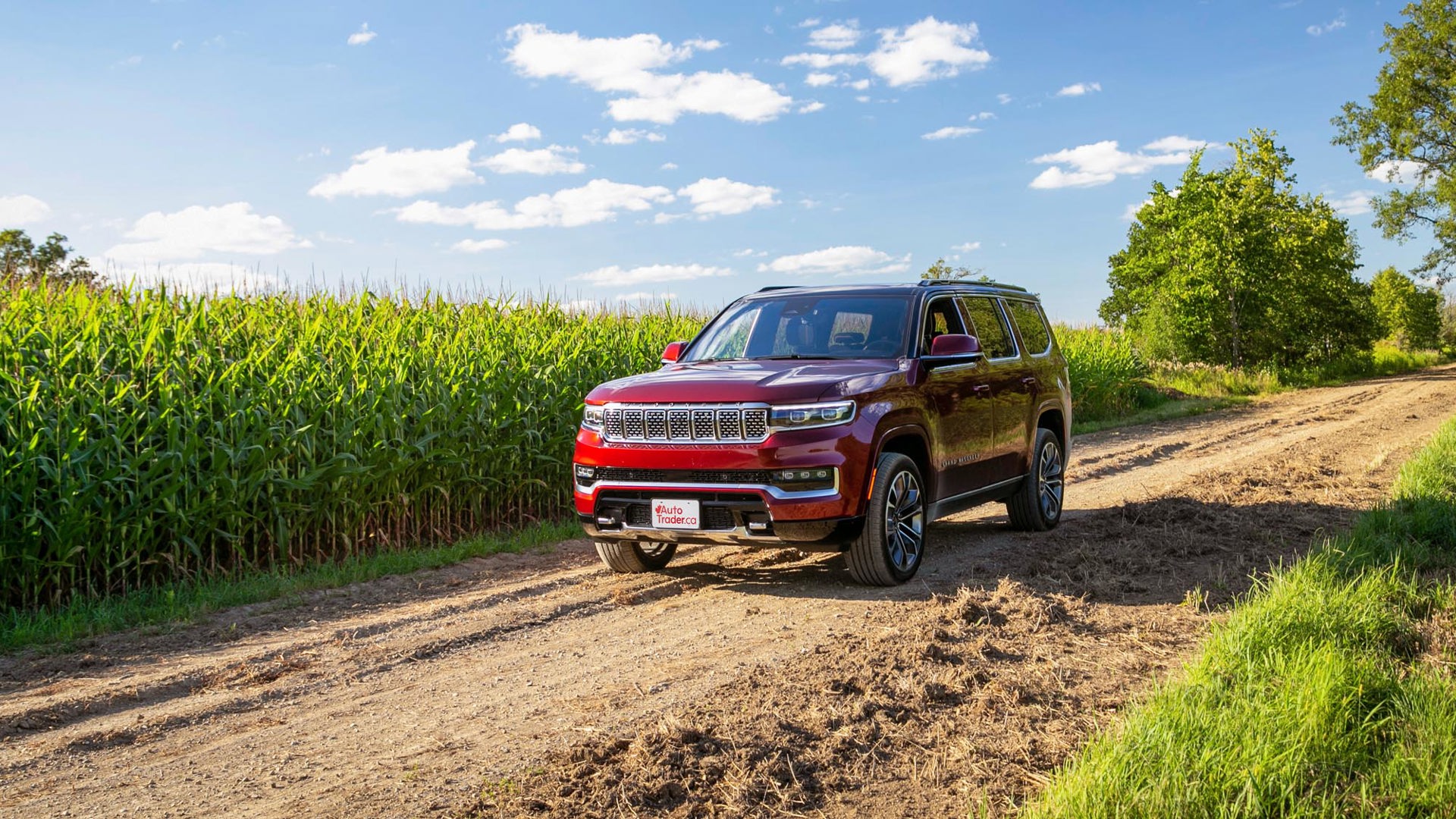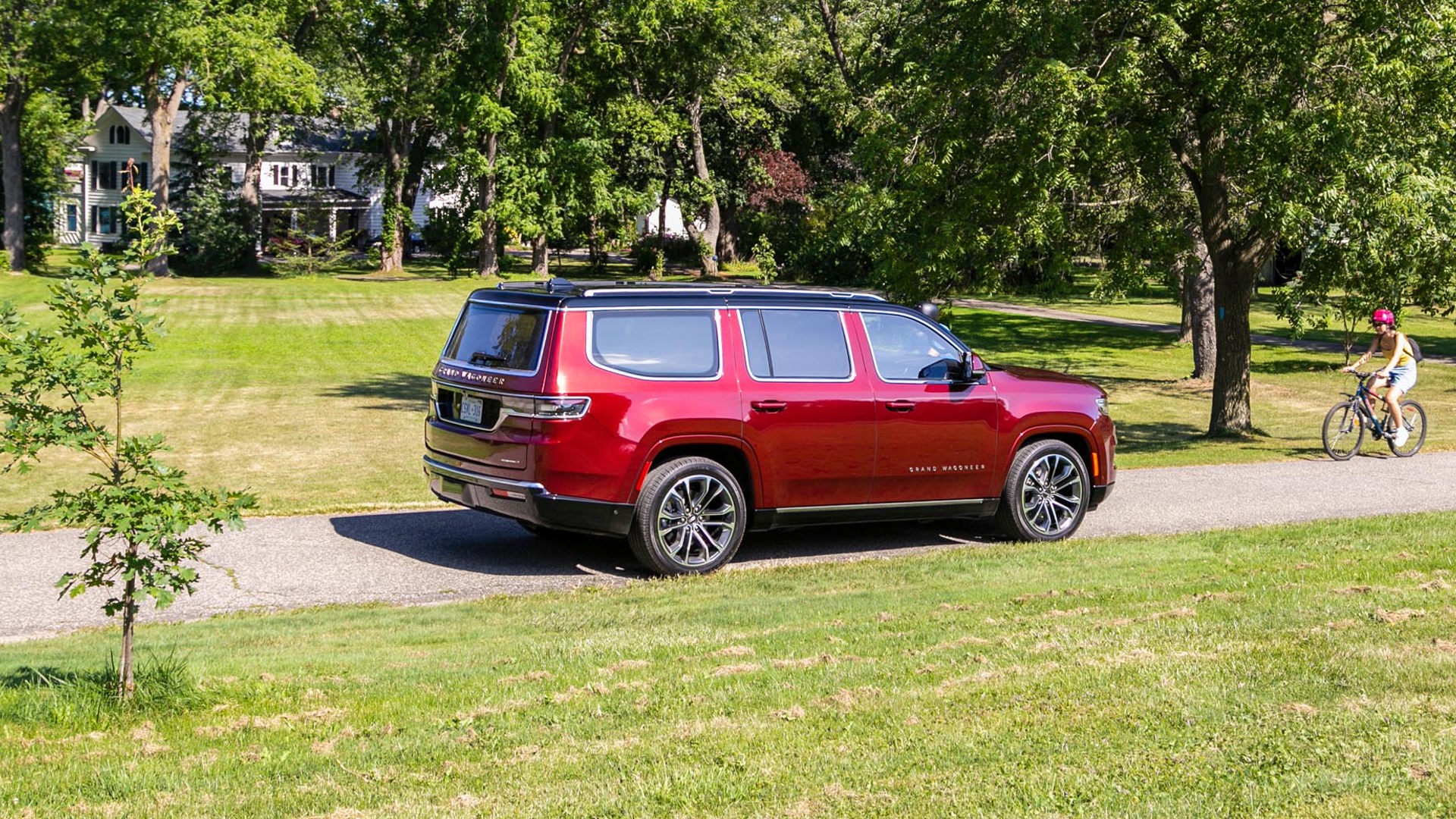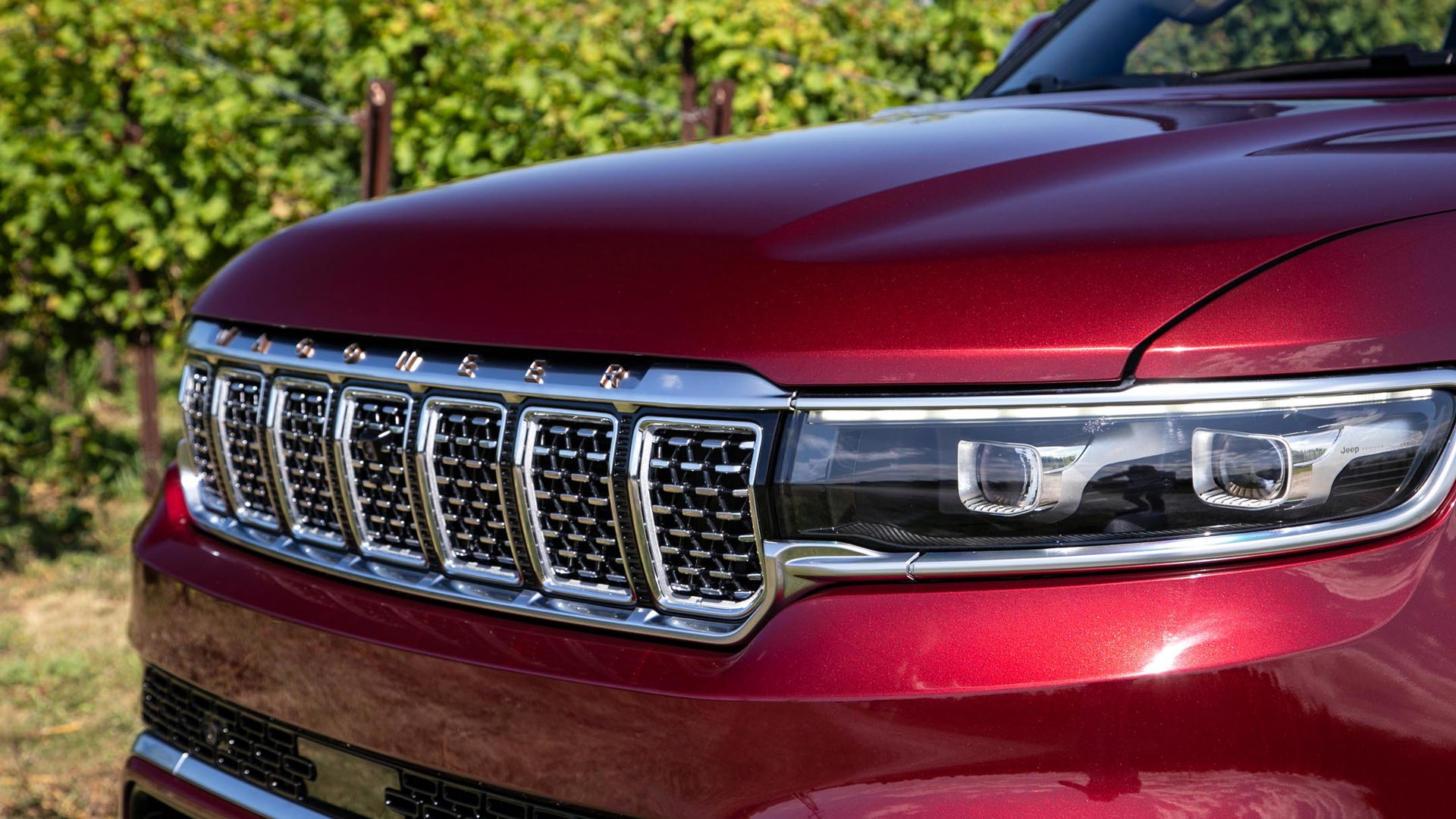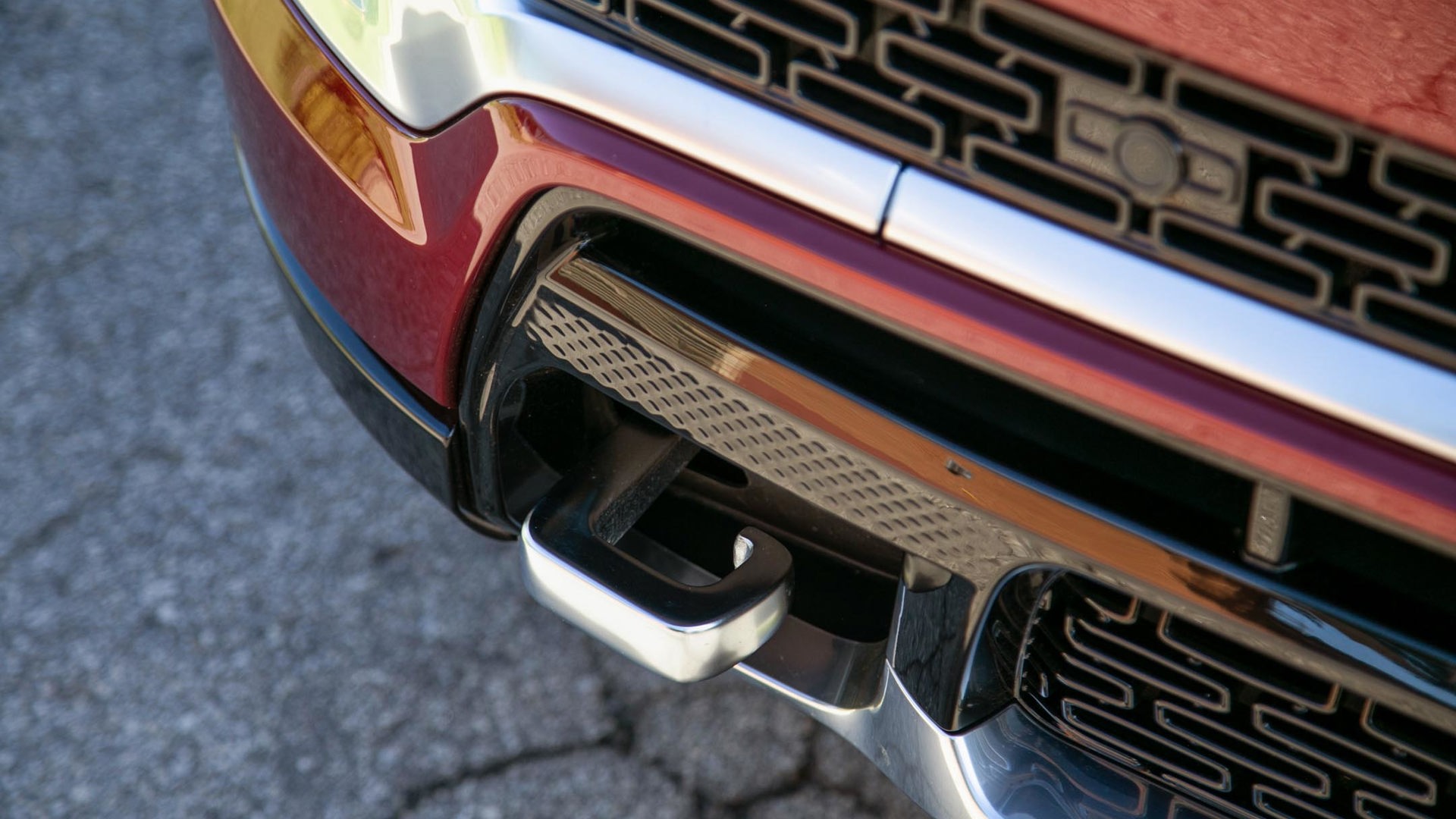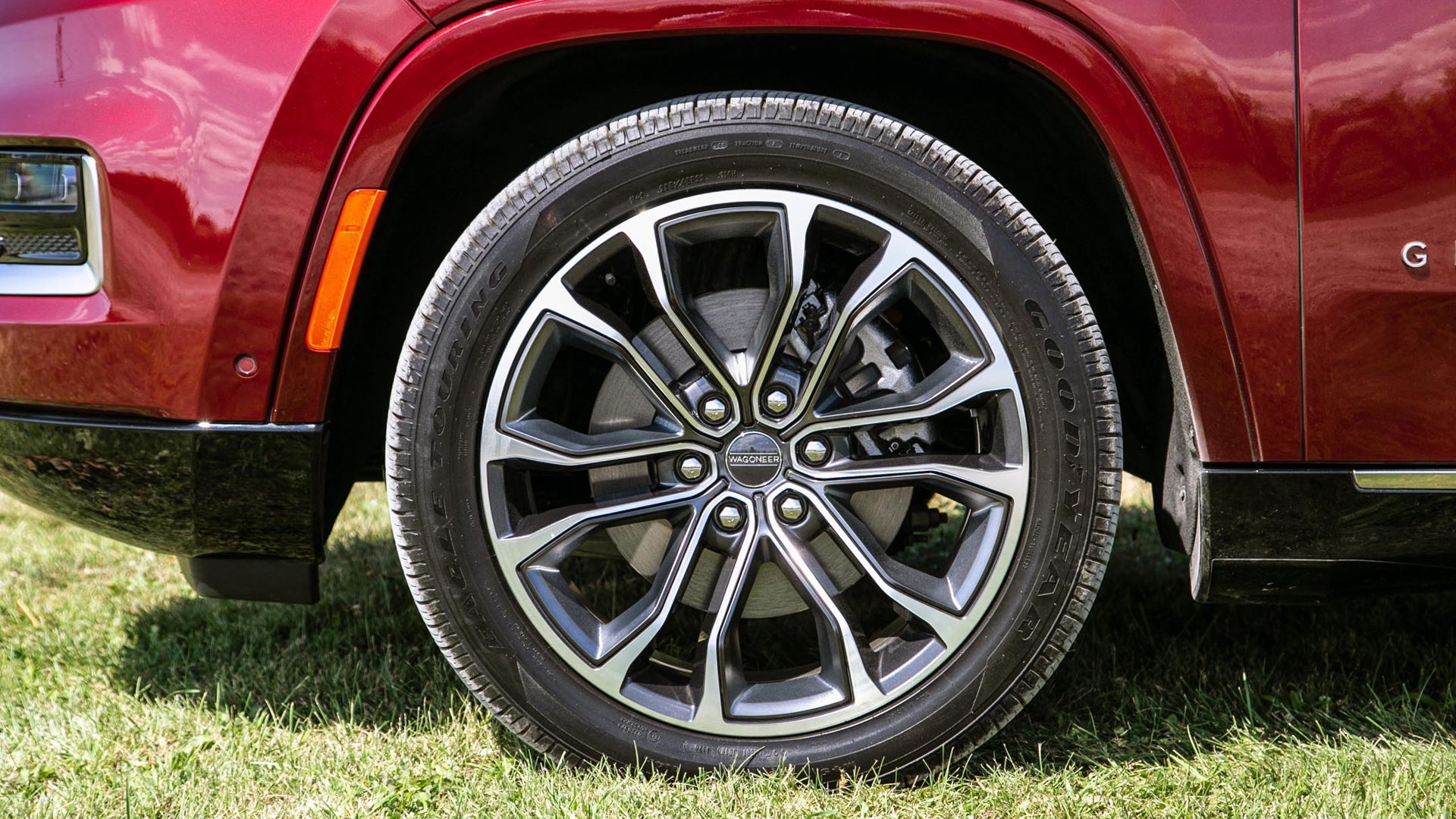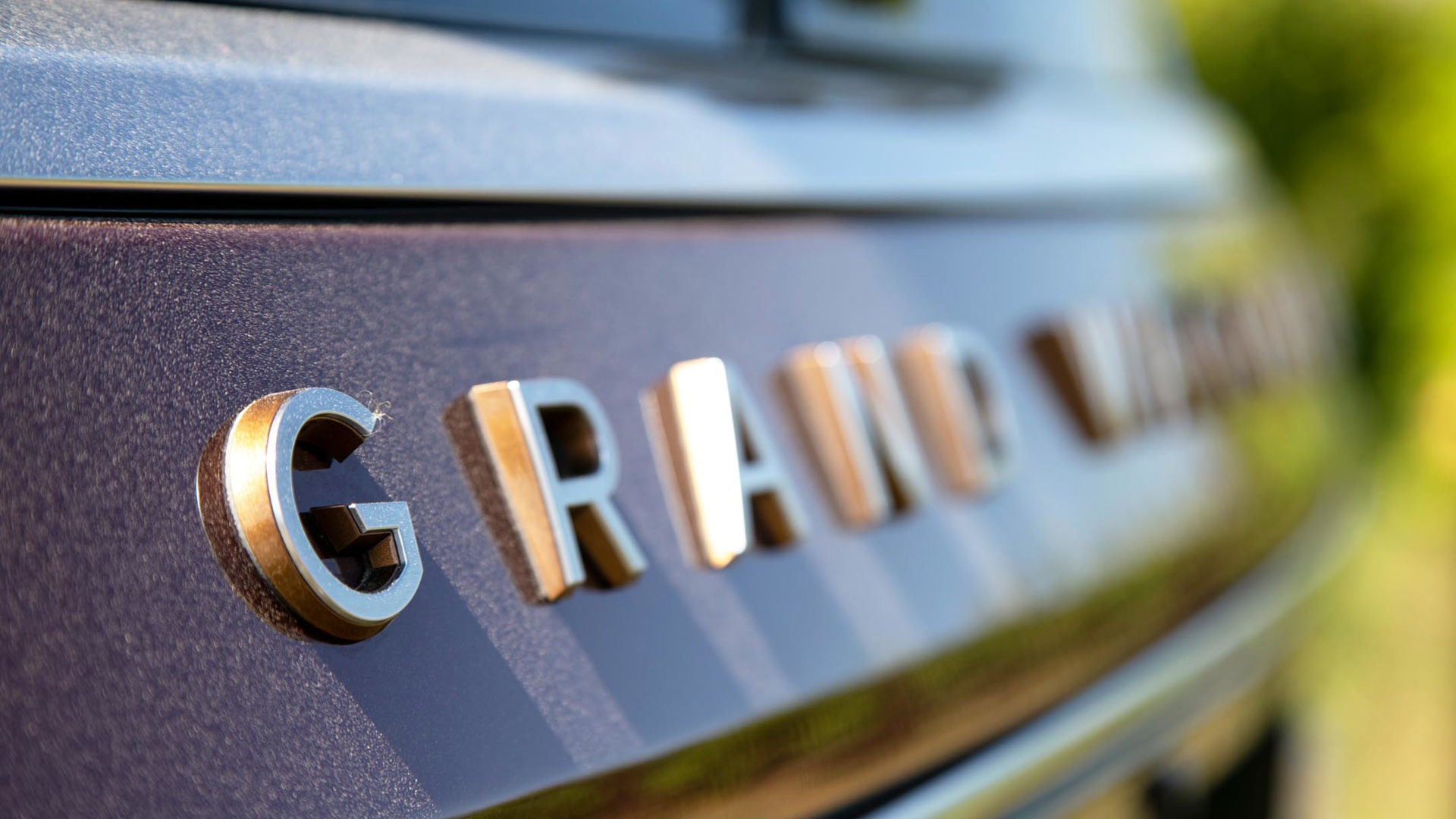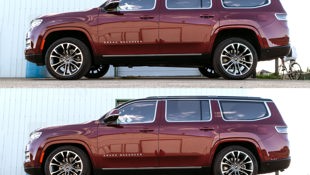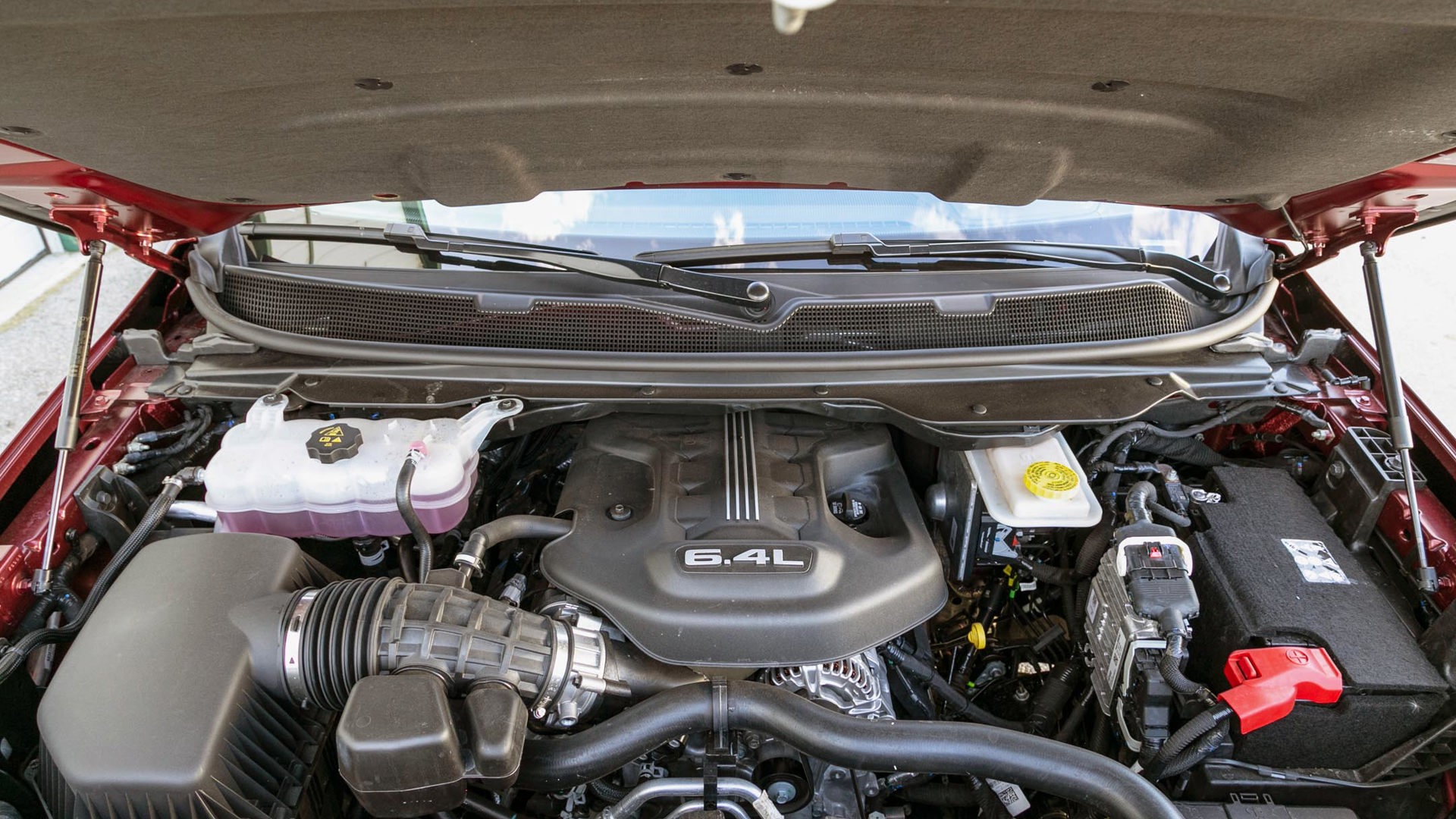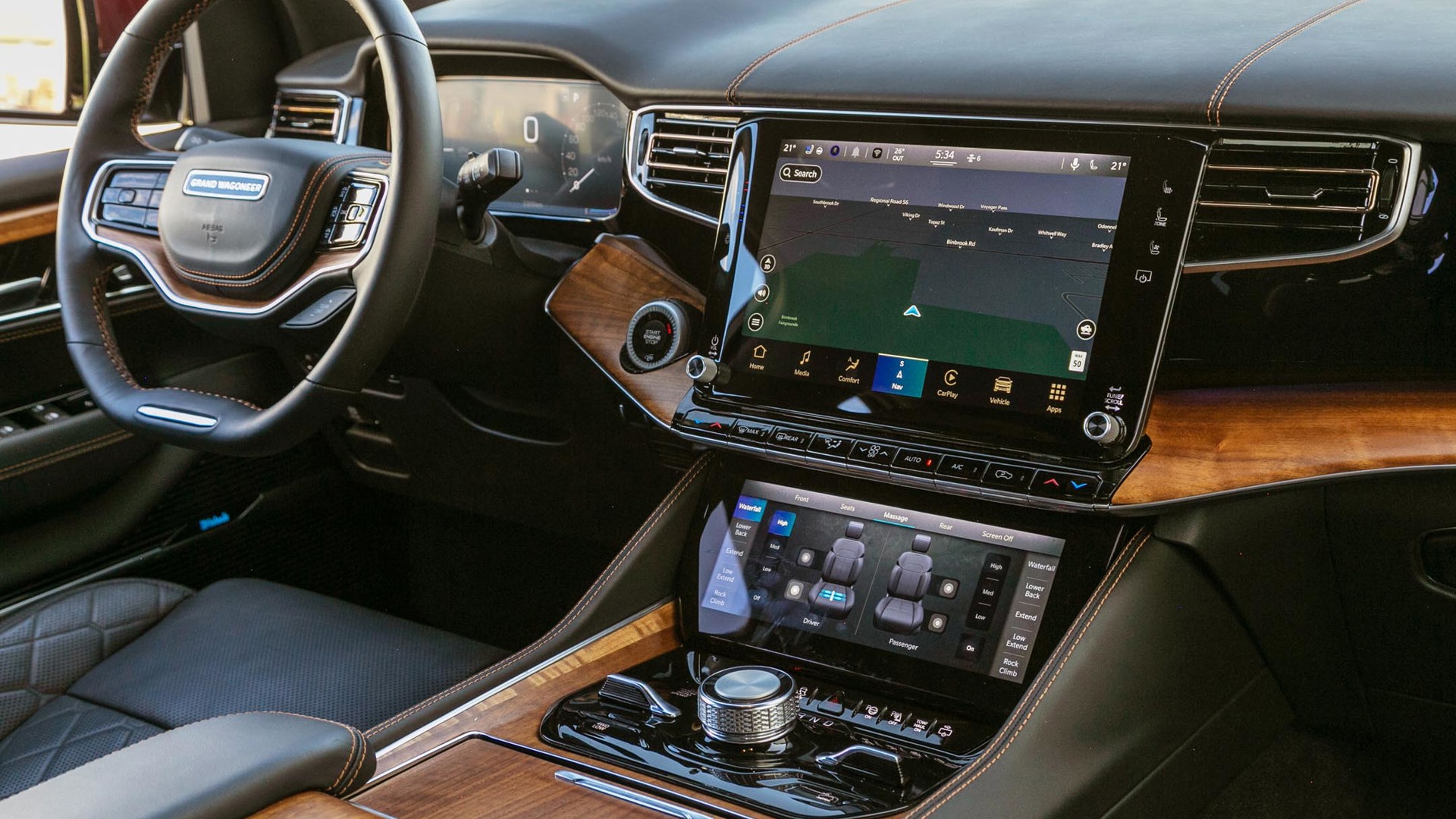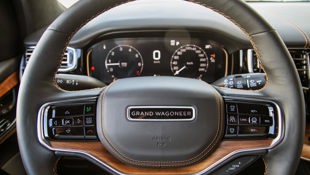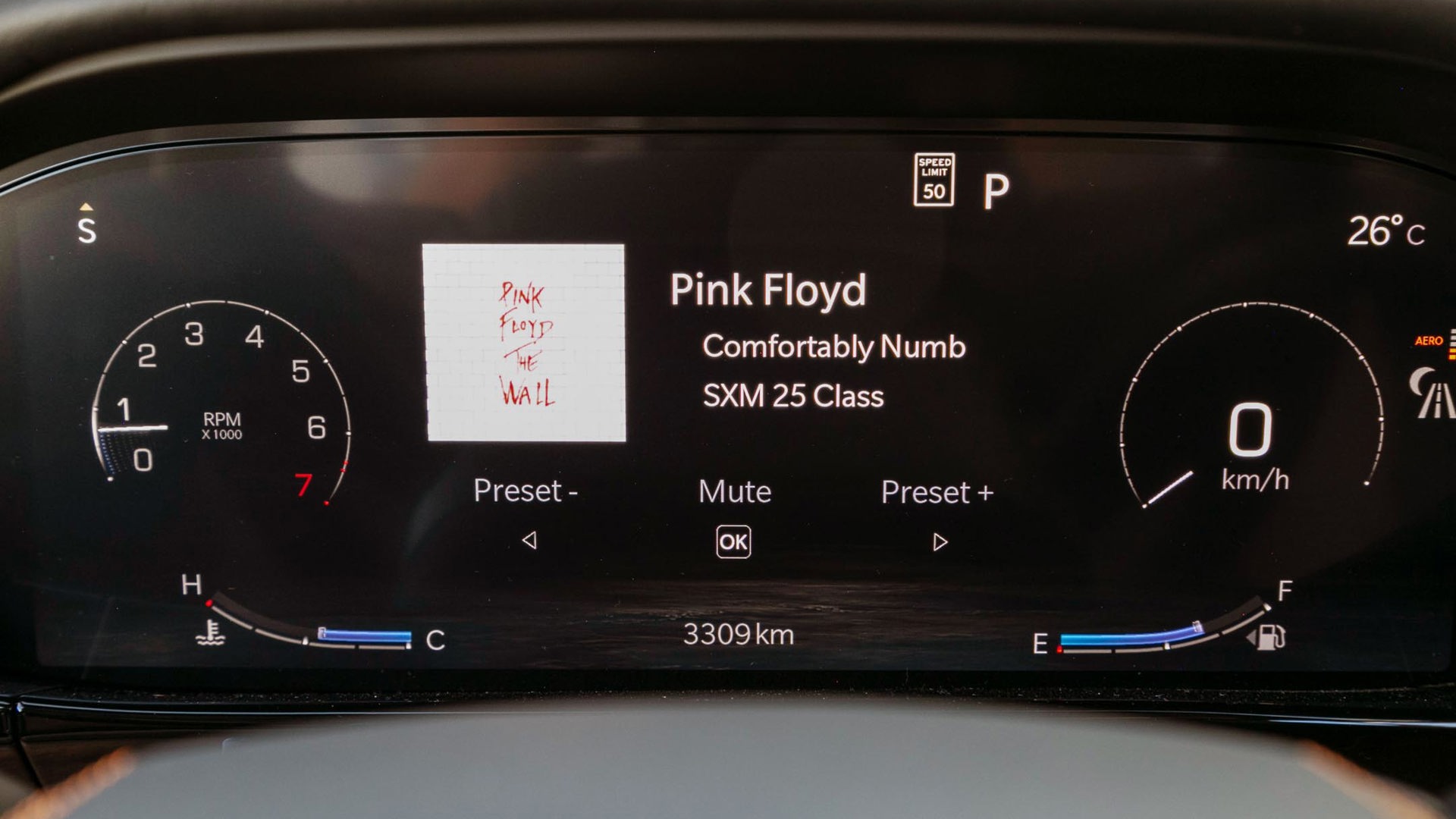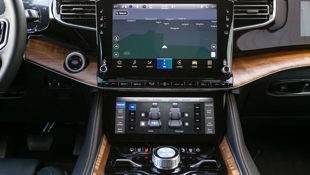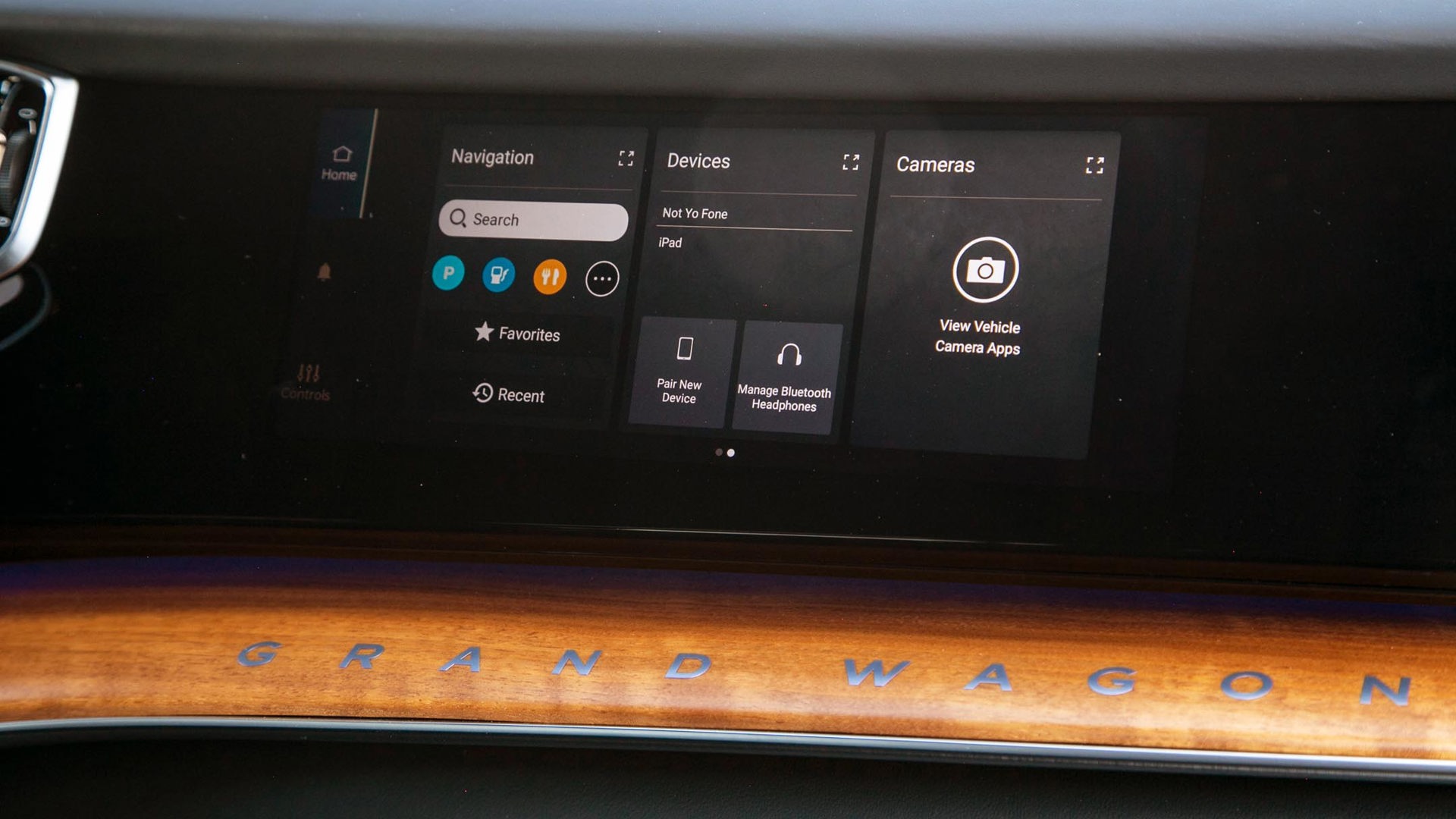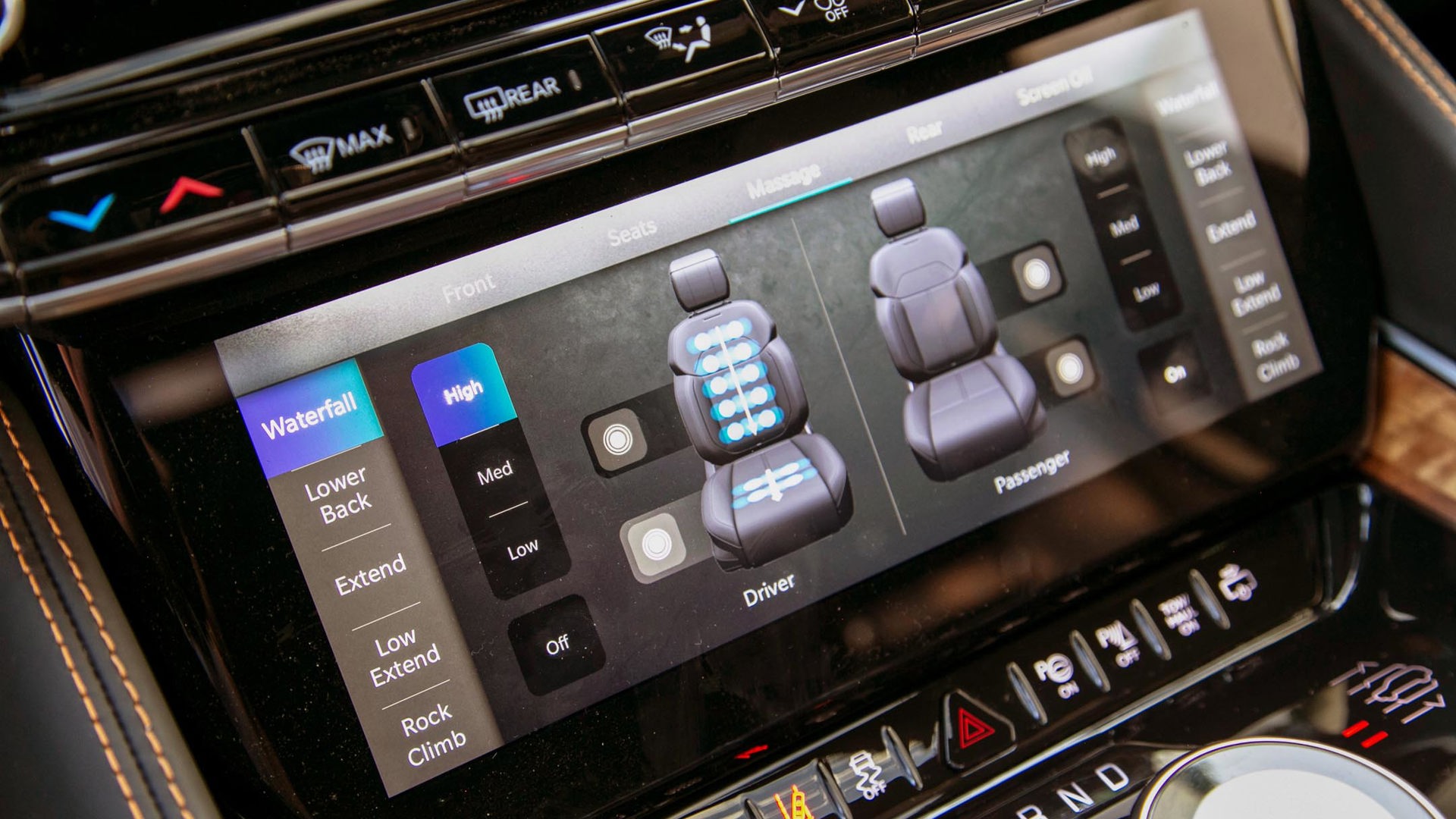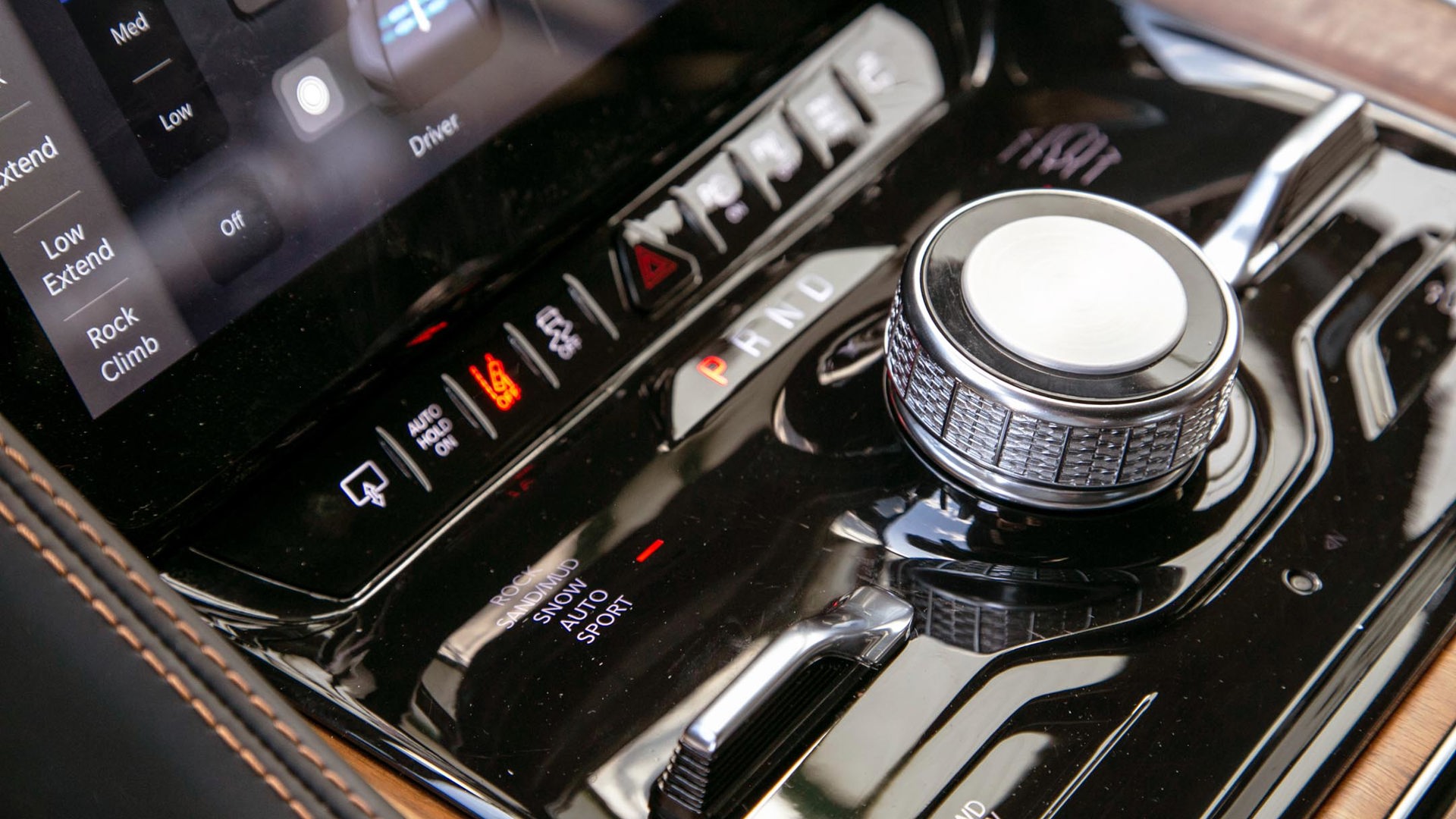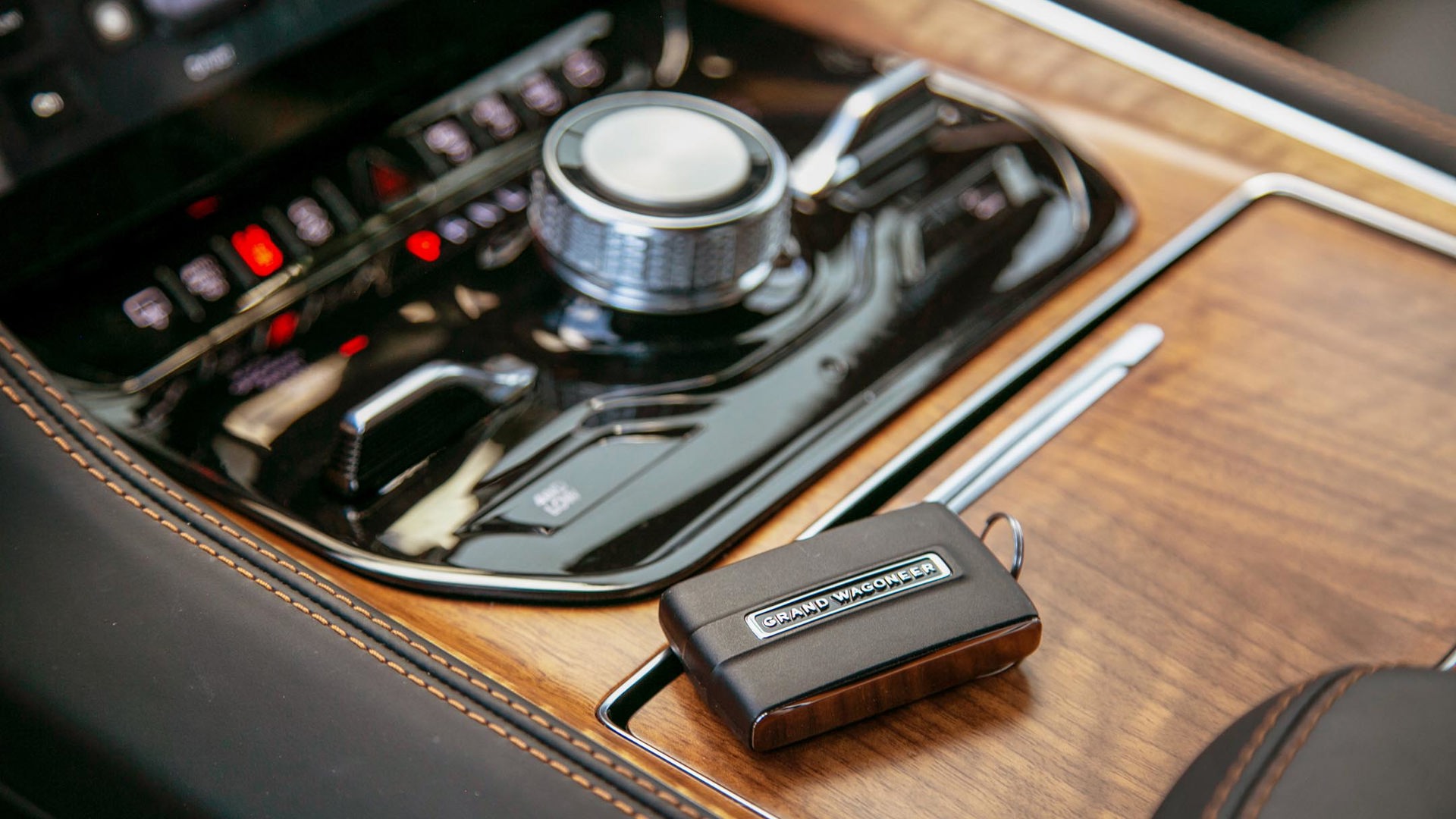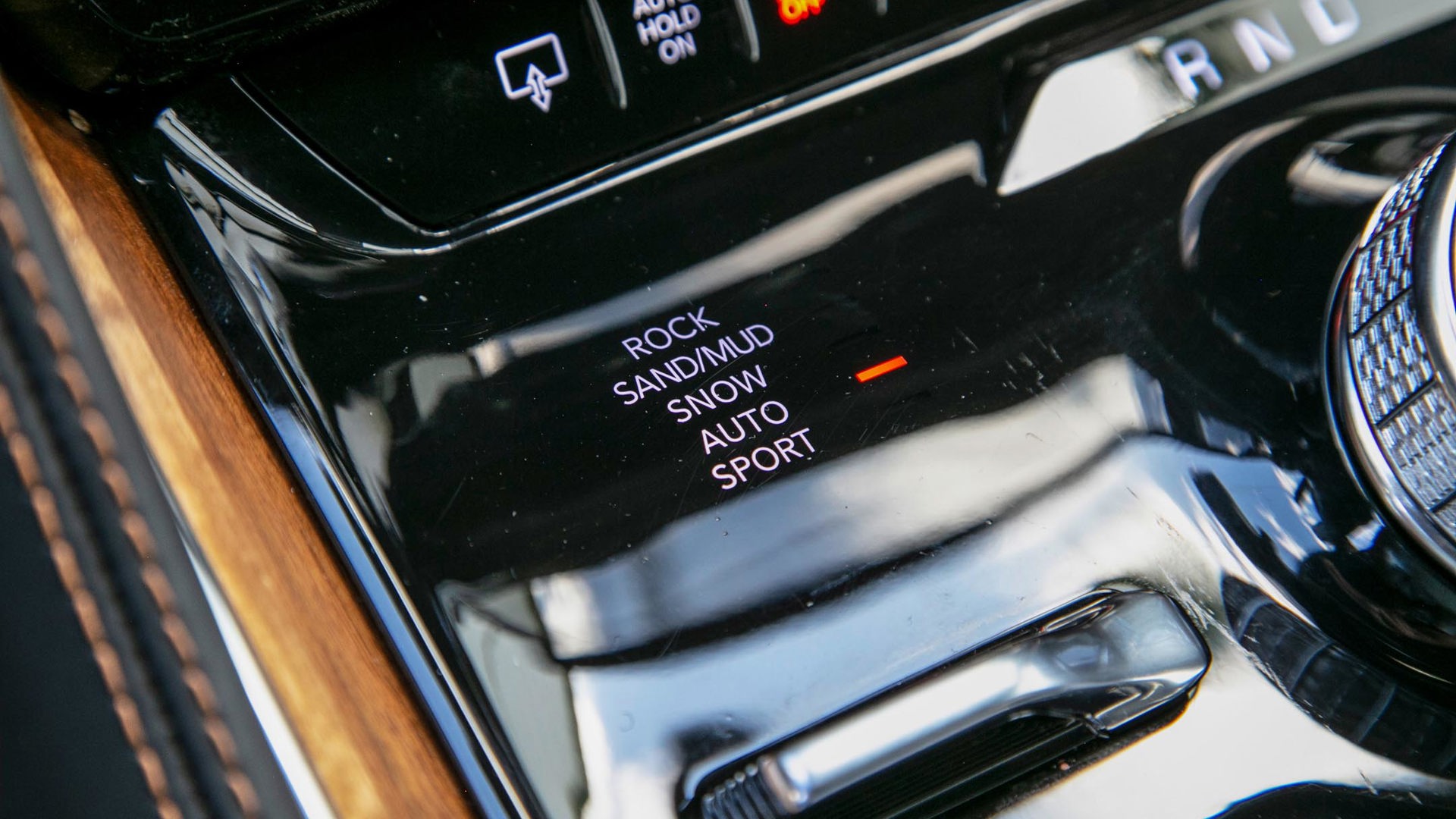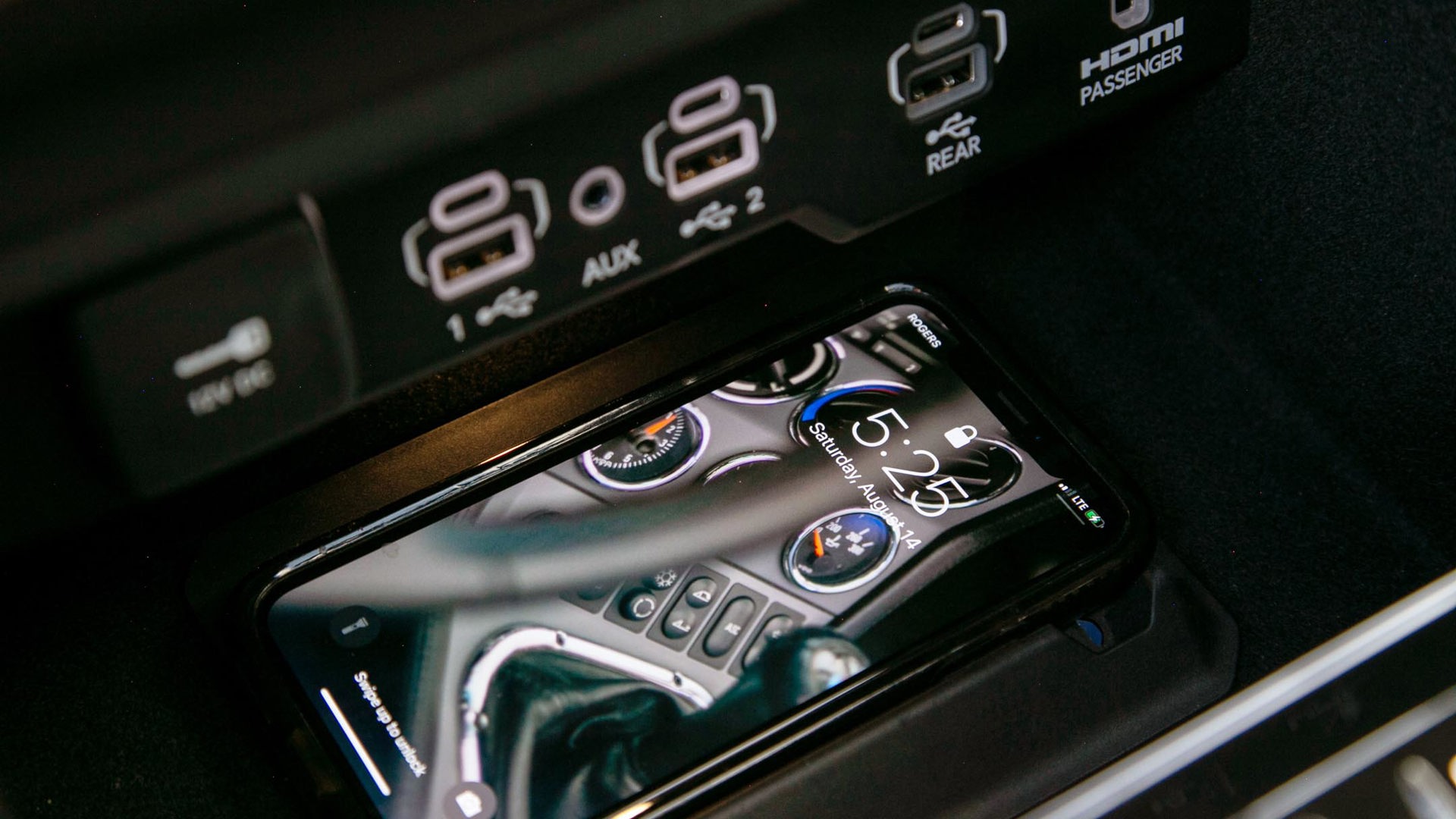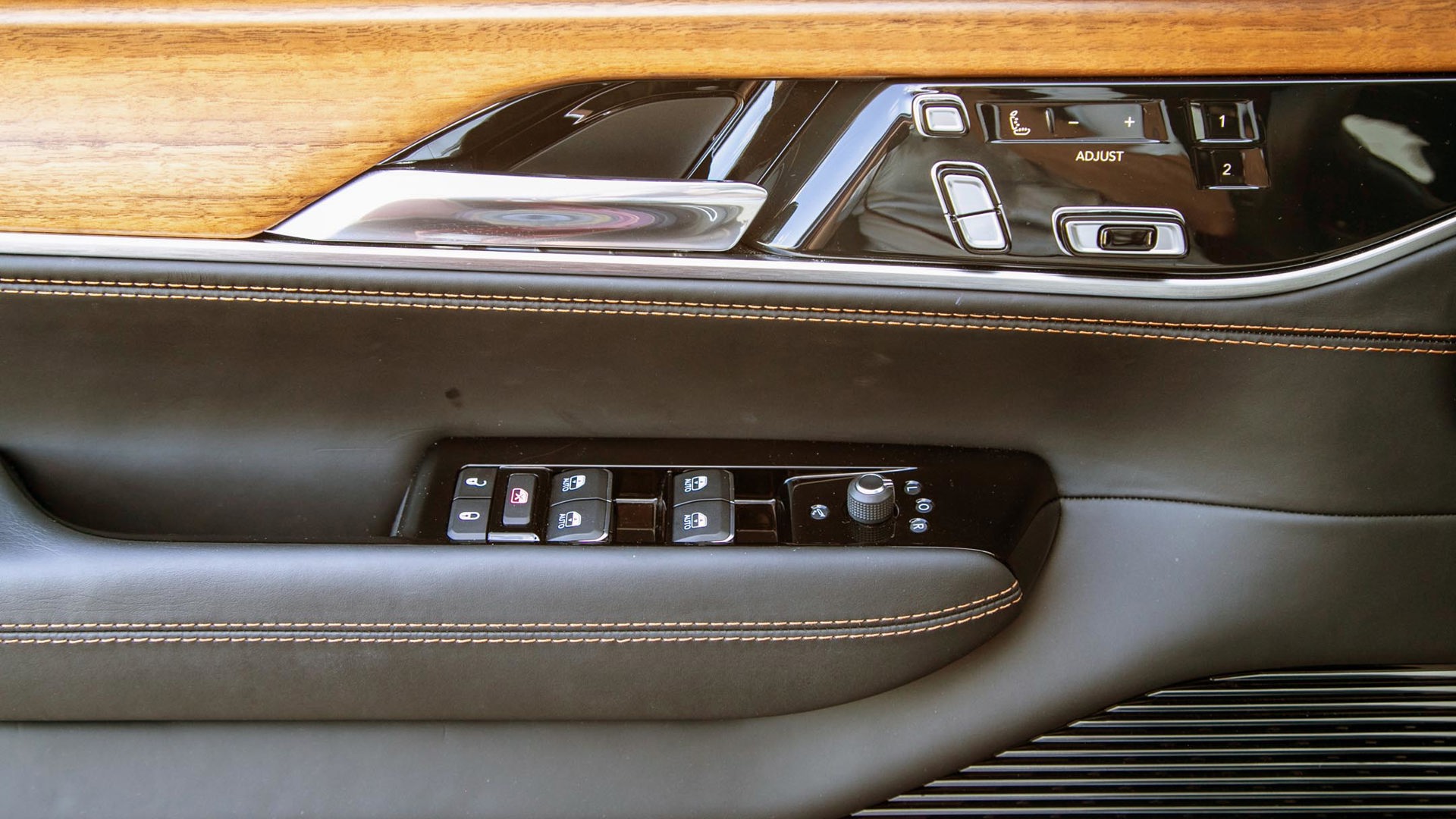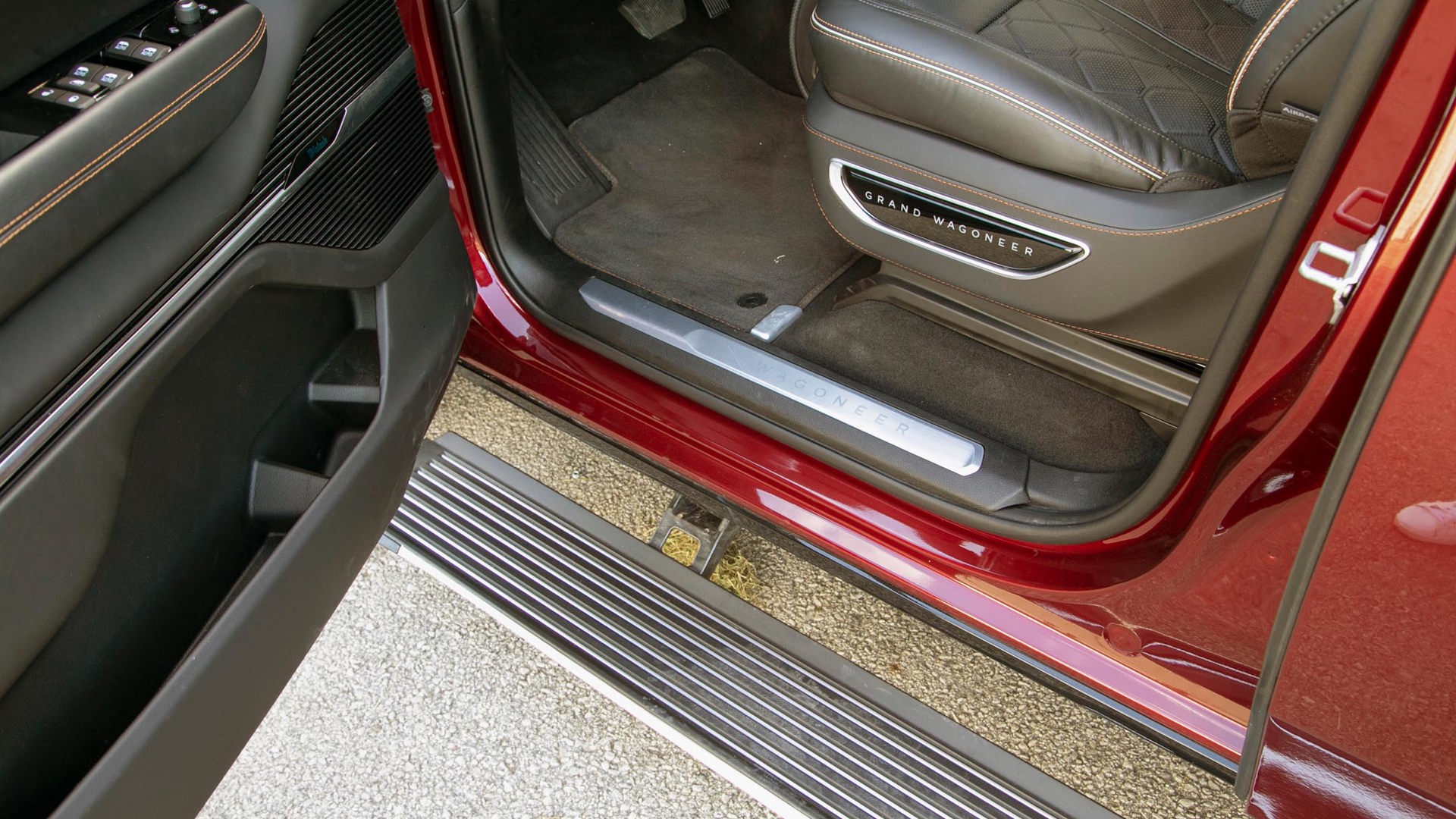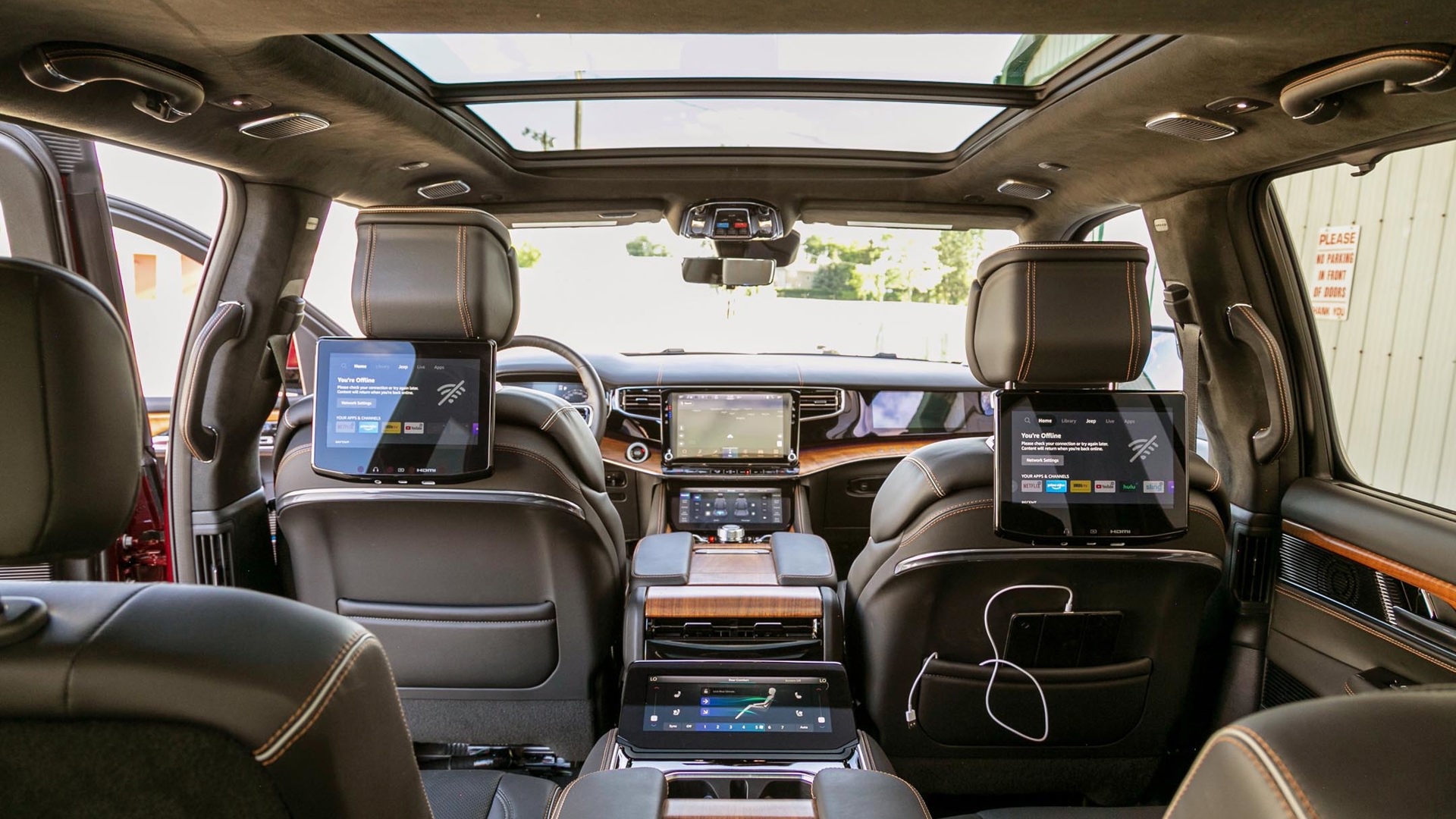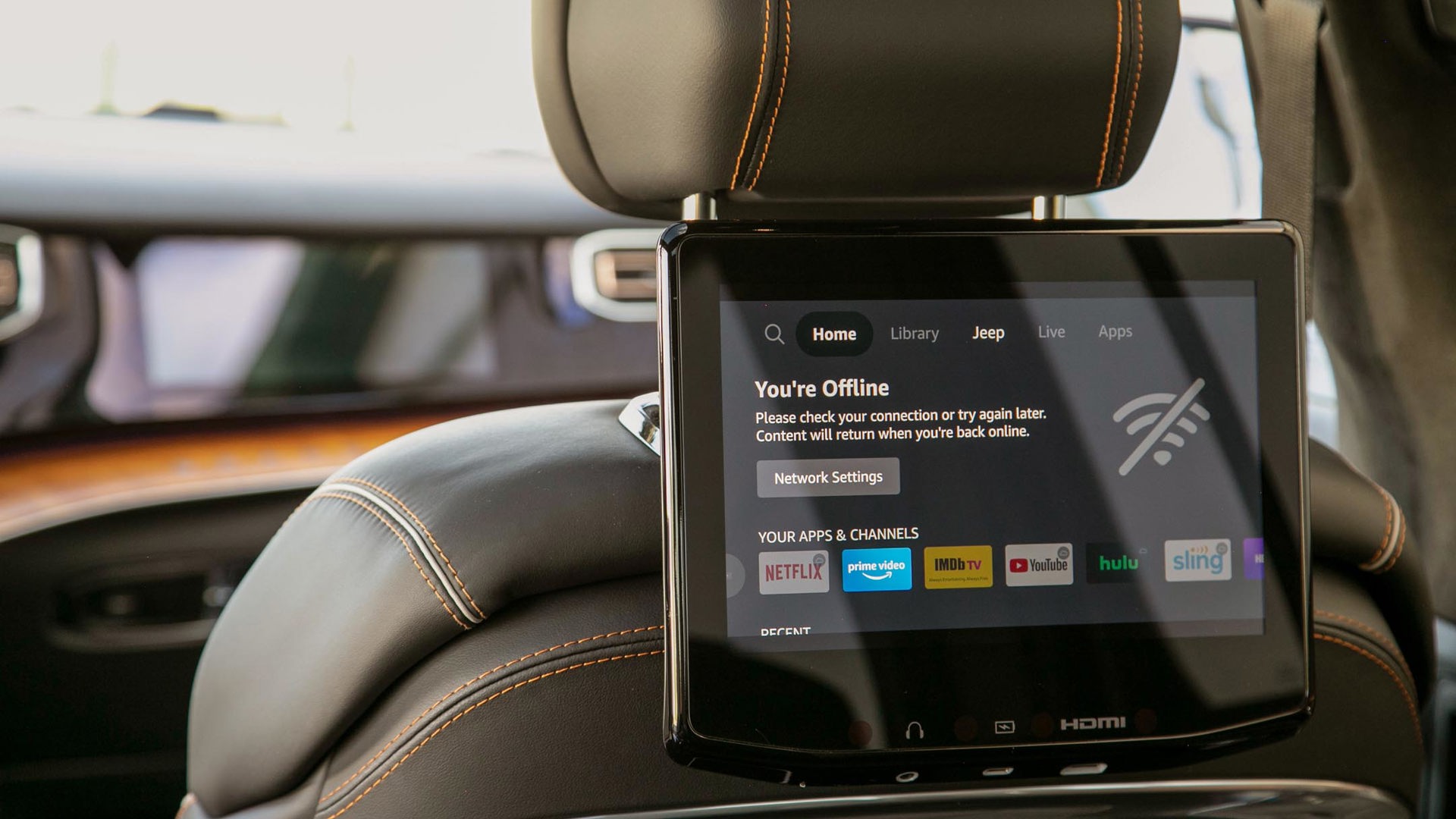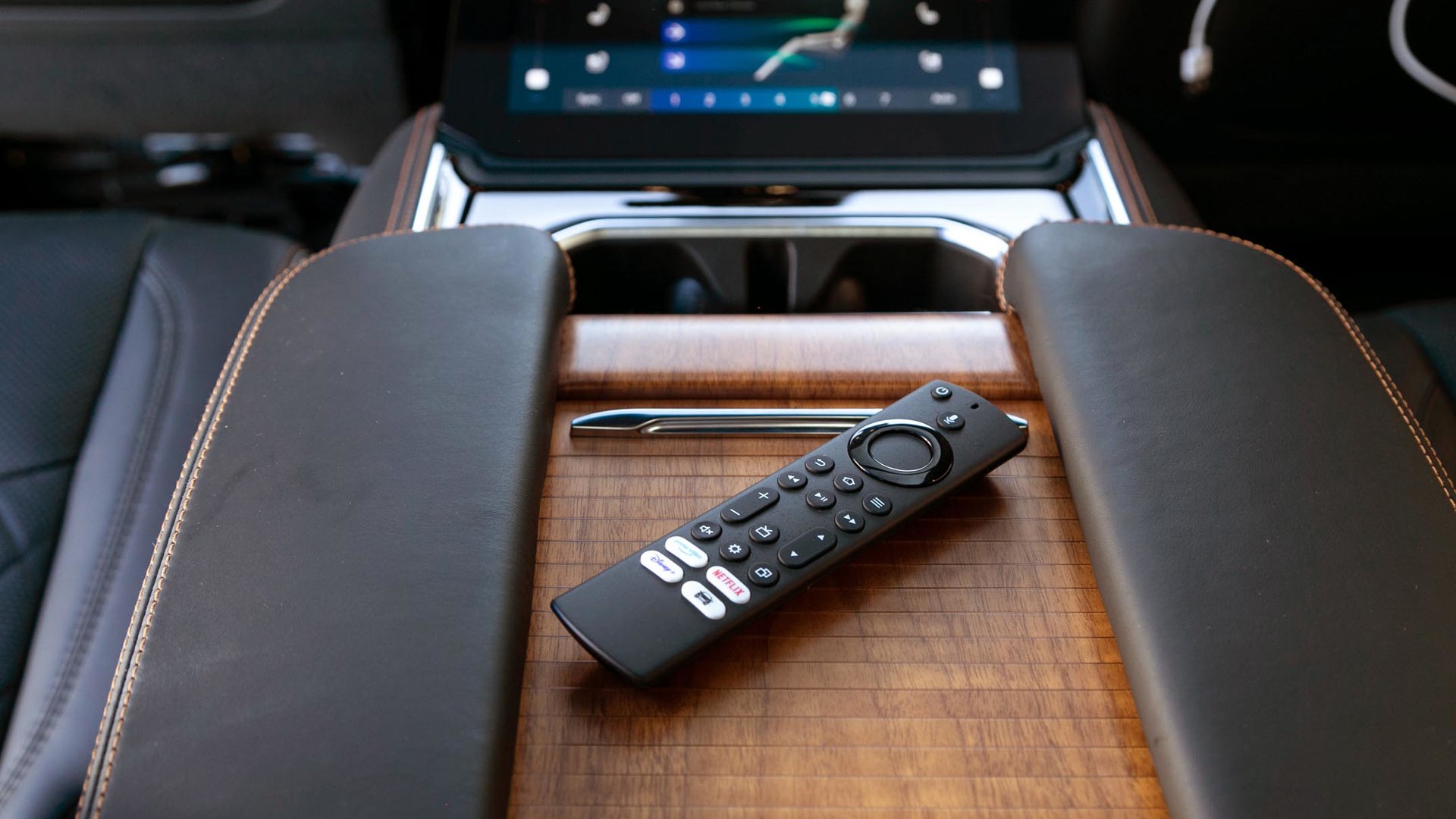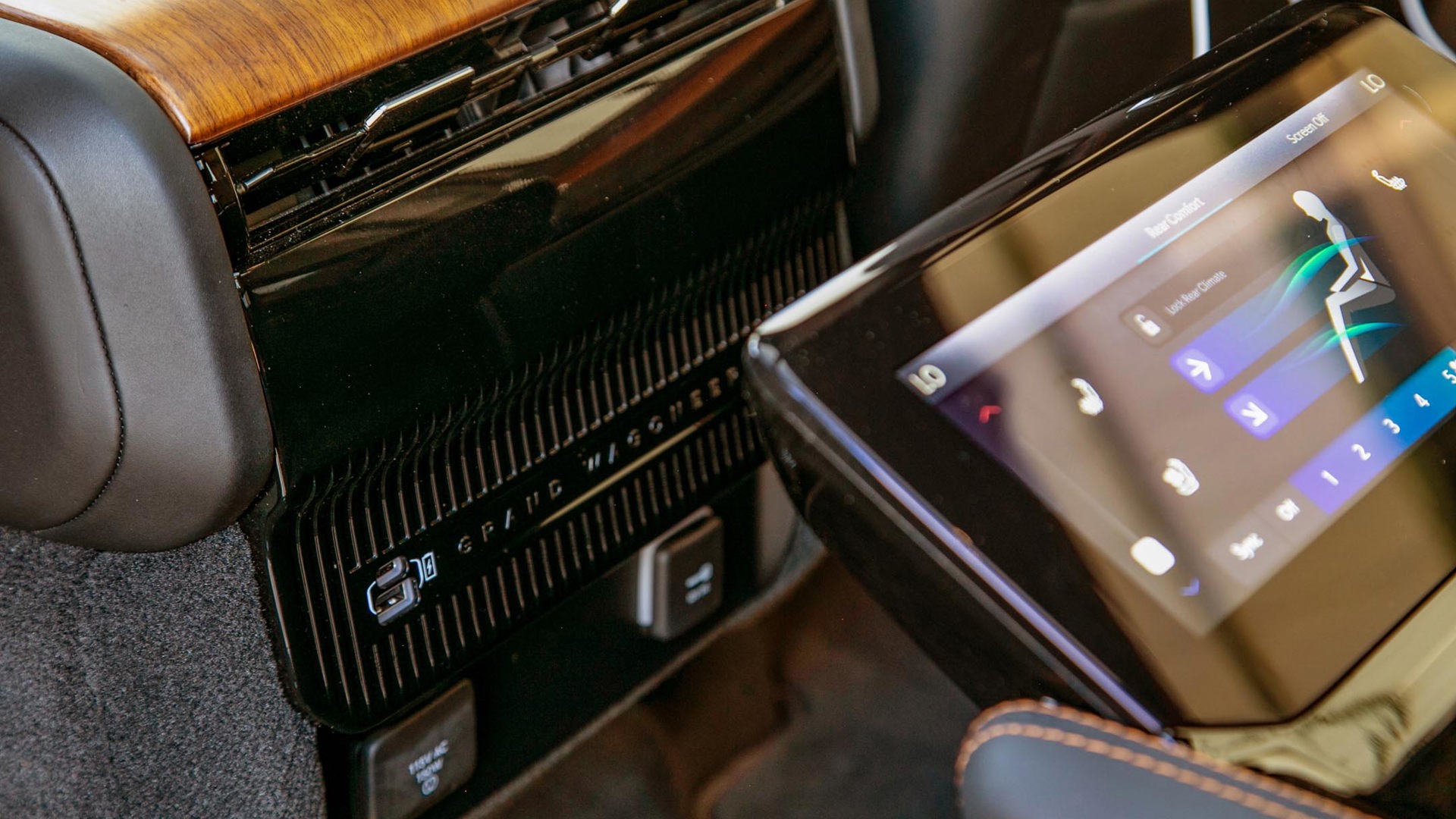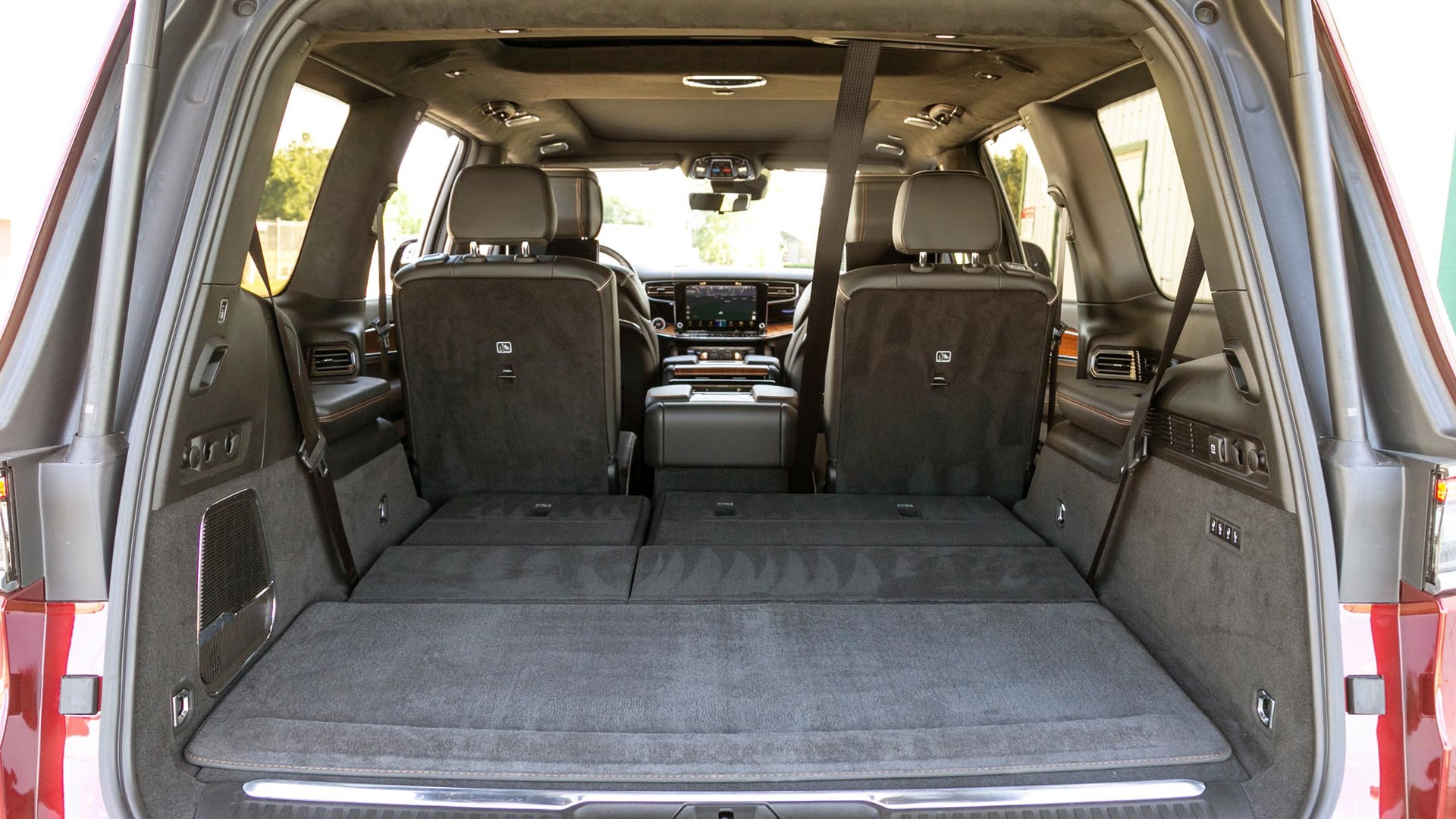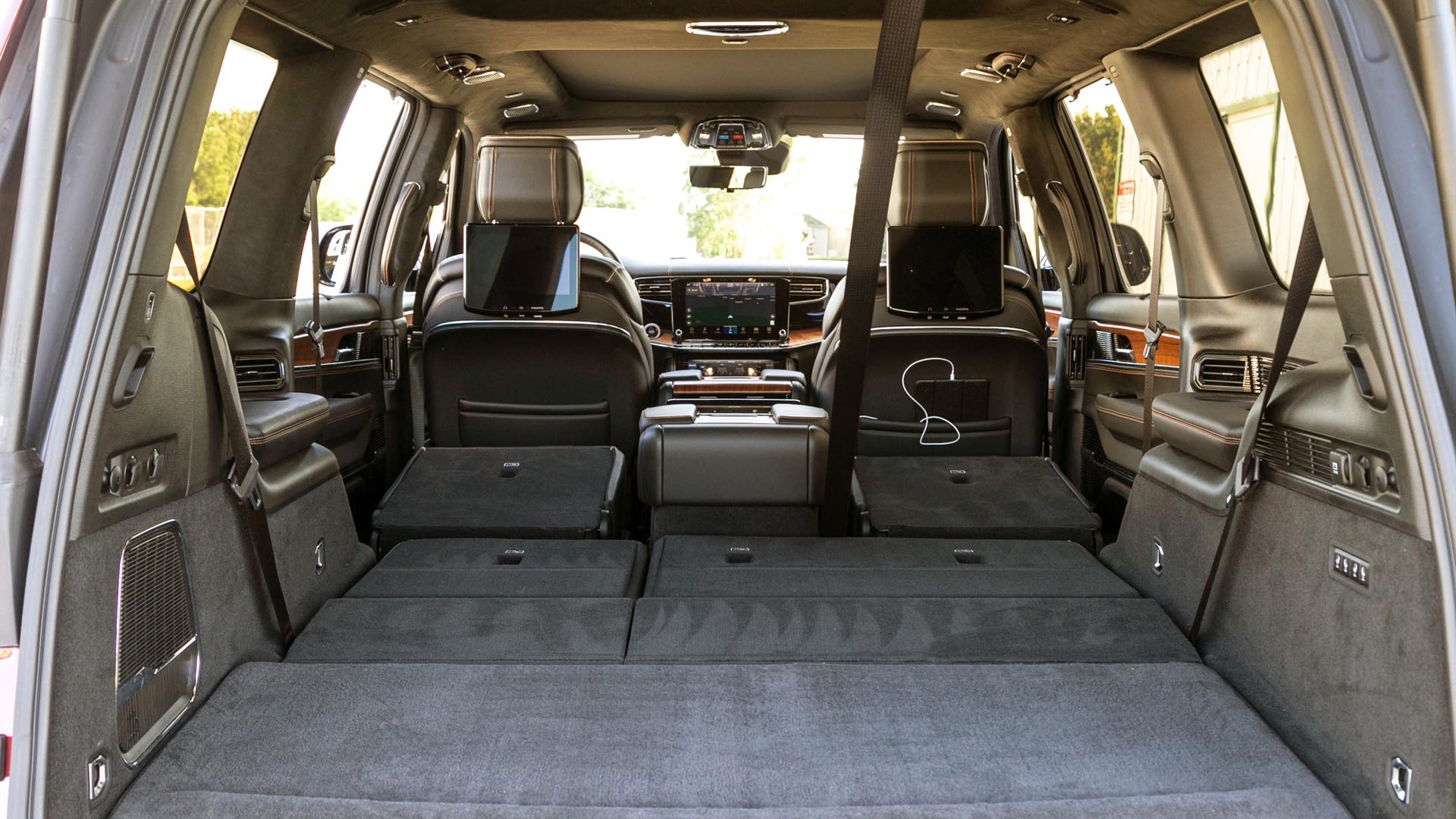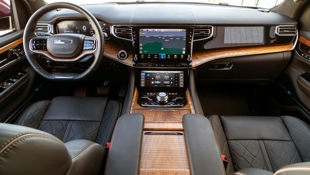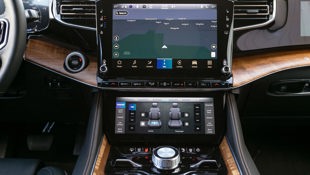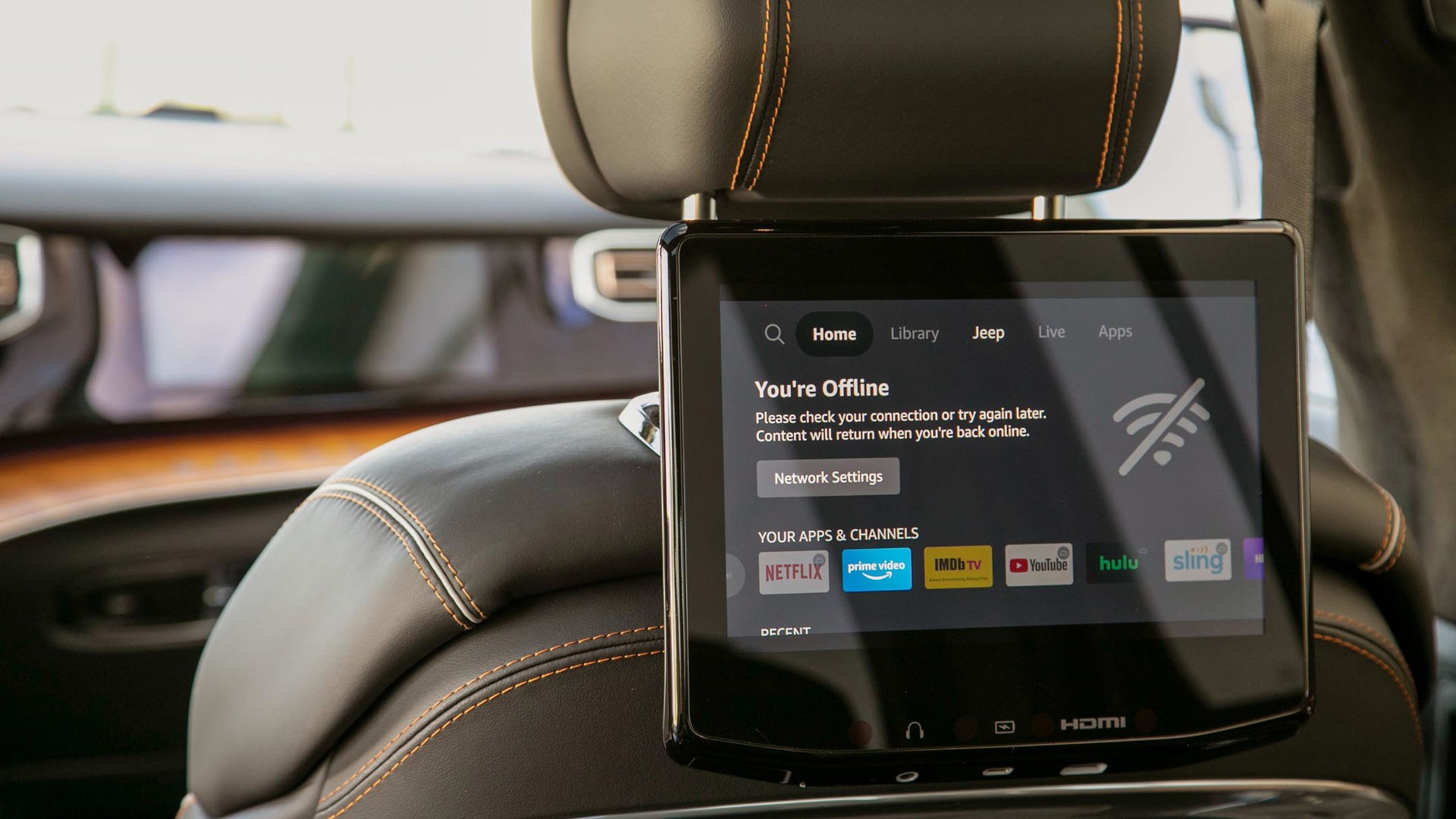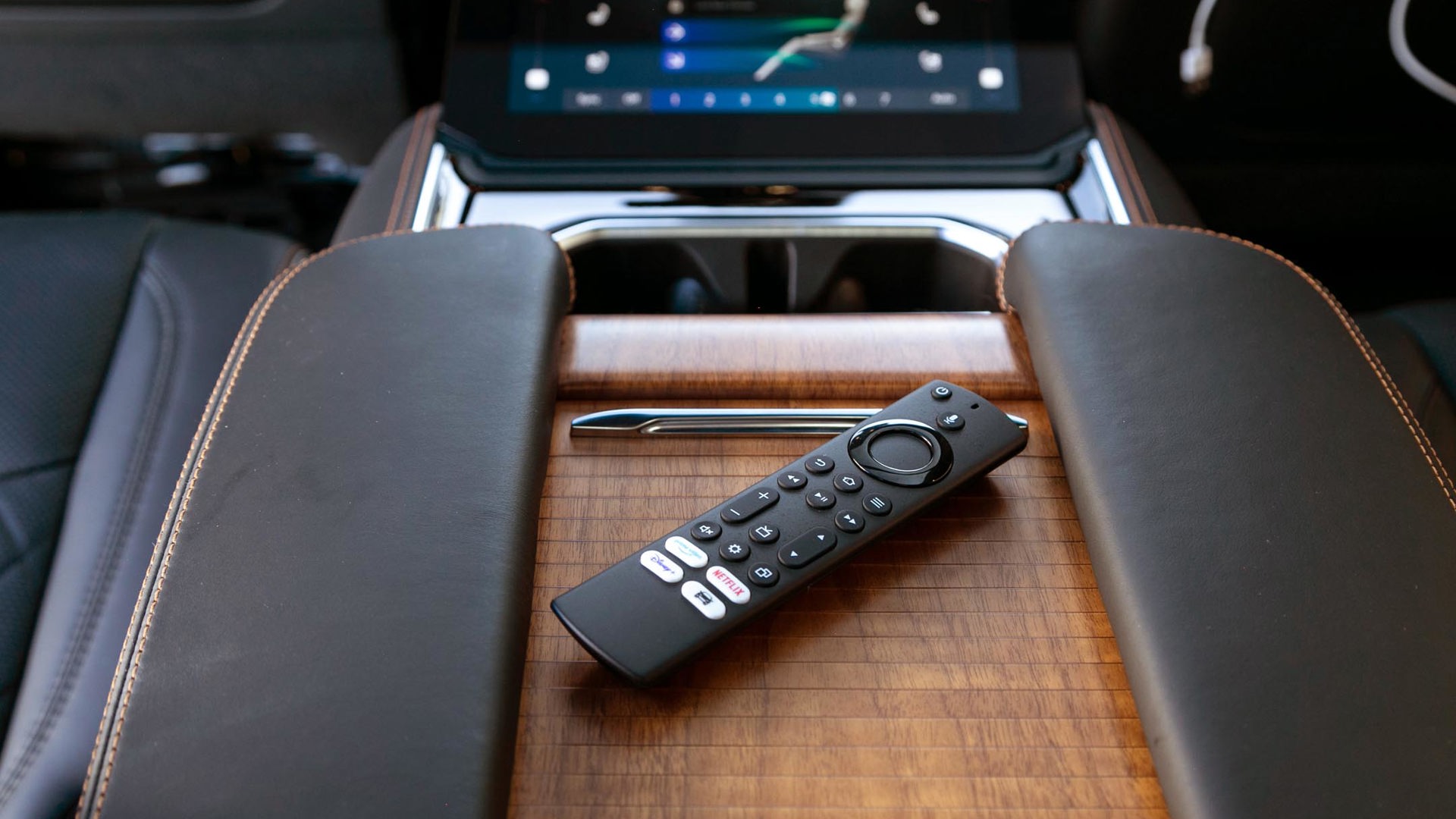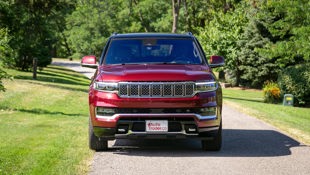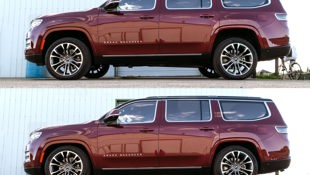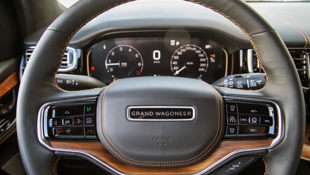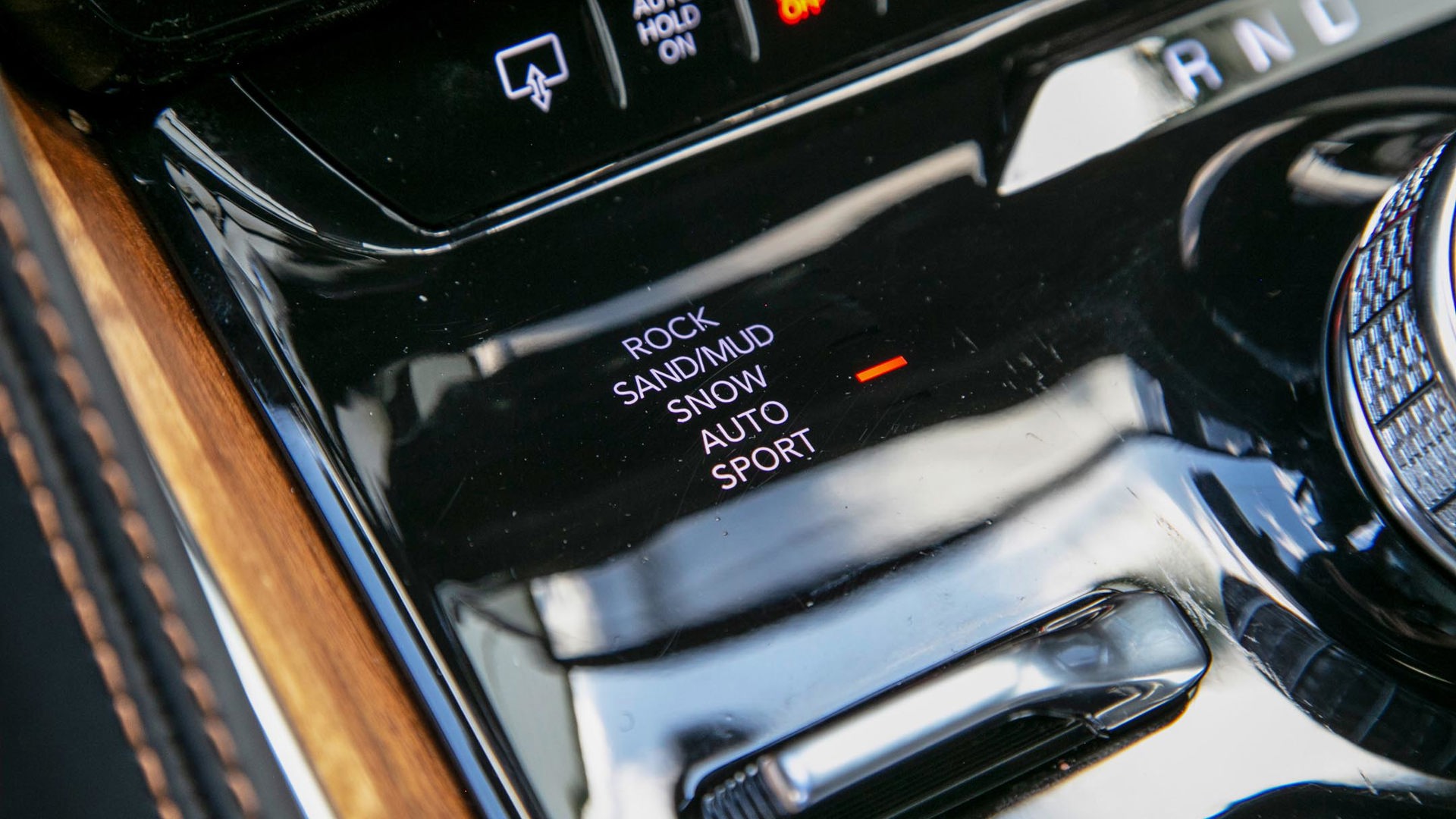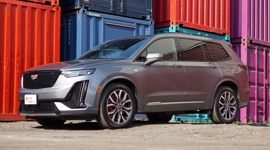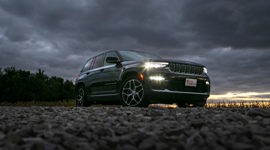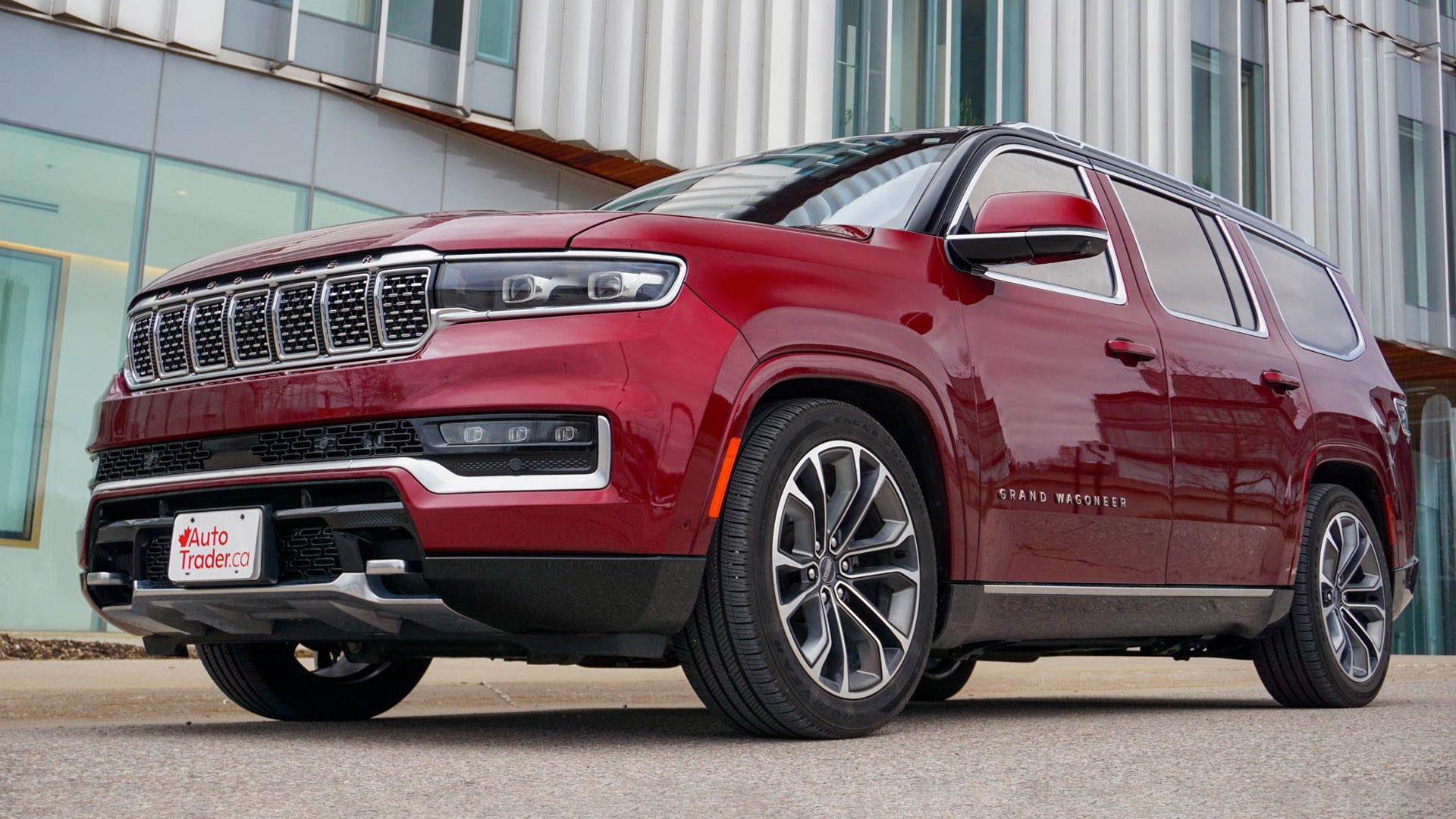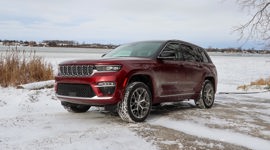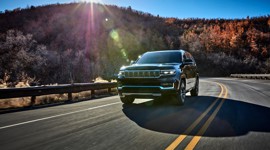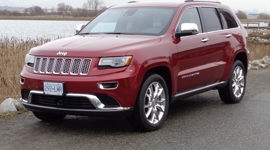Jeep is a brand celebrated for its long and storied history.
Every five years or so, there’s a new commemorative badge slapped onto the brand's models to remind buyers that these SUVs are steeped in history dating back to World War II. For those counting, we’re up to 80 years now, according to this year’s anniversary edition.
Jeep has been saving the return of the Grand Wagoneer name for just the right occasion, and that time is now. Folks of a certain age who might have a couple of lanky kids, a dog, and importantly, the wherewithal to buy a full-size SUV might also remember Jeep’s premium family-hauler from the ’80s, when it featured in our neighbourhoods, and as the de facto pop-culture family car. The Internet Movie Cars Database website lists the occasions in which the Wagoneer showed up on screen, and there are 13 pages of entries. (The most memorable might’ve been when John Candy drove one in The Great Outdoors).
There’s a remarkable buzz for old Grand Wagoneers now, including a growing collectible market, particularly for clean ones. Its frumpy proportions and cringey vinyl-wood panelling add to the nostalgic appeal of the old ’utes, and by the end of its production run in 1991 it had endured darn-near three decades on the same platform. The last model to roll off the assembly line bore an uncanny resemblance to the original 1963 model.
By the end of the ’80s, a Grand Wagoneer was a unique luxury machine that cost at least 50 per cent more than full-size SUVs from Chevrolet or Ford, not to mention the minivans most middle-class parents were driving at the time. Cadillac’s Escalade and Lincoln’s Navigator didn’t exist, and the likes of BMW or Mercedes-Benz offering a full-sized SUV was a laughable notion. Today, the arena in which the 2022 Jeep Grand Wagoneer competes is wholly different from the one 30 years ago when it left the market.
Going Its Own Way
Where Jeep’s designers could have gone retro with the new Wagoneer’s look, they have exercised considerable restraint, instead delivering a design that clearly fits within the contemporary Jeep playbook. The trademark seven-slot grille adds instant recognizability, but it takes a very keen eye to find any Jeep branding. Instead, across the nose, doors, and tail are large “GRAND WAGONEER” word marks.
The greenhouse offers tall, square windows, and the profile offers nothing to recall the historic namesake, suggesting a missed opportunity to at least make the rear window angled the same way as the classic Wagoneer’s. Nevertheless, this is an unmistakably premium offering that gives up nothing in terms of in-person presence to a Lincoln Navigator or Cadillac Escalade. And no, Jeep isn’t offering a wood vinyl appliqué for the new Grand Wagoneer.
Impressive Interior
Fitting somewhere between the stunningly classic Navigator and the hyper-tech Escalade is the Grand Wagoneer’s cabin. Test vehicles used for this Canadian media drive event were all top-trim Series III spec, and the finishes were impressive. Large swaths of matte-finish walnut wood span the dashboard and contrast beautifully against the supple black leather found throughout.
The front seats offer 24-way adjustability plus heating, cooling, and massage features, but even the heated second-row captain’s chairs and third-row bench offer impressive luxury. Passenger space is sufficient to accommodate two average-sized adults in the third row without complaint, and there are seatbelts to accommodate three abreast.
Four-zone climate control, a three-panel sunroof, plus the suede headliner and cooled centre console box are all luxurious touches, too. And despite being a pre-production machine, the assembly of the test units was first-rate.
Tons of Tech & Safety
The top-tier Grand Wagoneer has more screens inside than a Best Buy. Beyond the digital gauge display and 12-inch infotainment touchscreen, there’s a flip-up touchscreen for climate and seat controls on the centre stack, and a climate control display panel, as well as a pair of individual touchscreens for the second-row seats, and even a 10.25-inch screen before the front-seat passenger. The rearview mirror also has a screen to allow an unobstructed view behind the vehicle.
That front passenger screen is invisible to the driver, meaning it can be used to enjoy movies on the go or mirror a user’s phone on the screen via an HDMI input. It can even access the onboard navigation system, enabling the passenger to find alternate directions and sling them to the driver’s screen.
Integrated Amazon Fire Auto support connects to existing Amazon accounts for access to digital content on the go. Each rear screen can be operated independently and linked to individual devices, meaning everyone can plug in to their own world and avoid having to look at the scenery or talk to fellow passengers at all during a road trip. Whether that’s a positive or a negative is up for debate. But if everyone can agree on a song to sing along with, the 23-speaker stereo is sensational, offering crisp, clean, and powerful sound.
The Grand Wagoneer is a rolling showcase of Jeep’s driver assistance technology, too. The adaptive cruise control system allows for stop-and-go driving, and the lane-keeping system feels natural in its operation (avoiding the feel of ping-ponging within the lane like some competitive systems). There’s a host of automated braking and crash avoidance systems as well, including a watchful eye for animals, pedestrians, and inside, a drowsy driver behind the wheel. Night vision is standard equipment on the Series III trim.
A Luxurious Drive, Indeed
Beyond its full-figure size, the last Grand Wagoneer was also known for its big (and thirsty) V8 and impressive towing capability, and the same is true for the new one. While the Wagoneer models come standard with a 5.7L V8 and a mild hybrid system, the Grand Wagoneer comes only with a monstrous 6.4L V8. Its 471 hp puts it well ahead of the Escalade and Navigator (though notably behind the BMW X7 M50i), and the Jeep’s 455 lb-ft of torque is mid-pack in this illustrious class.
On the road, the big V8 pulls strongly and smoothly, directing its torque through an eight-speed automatic. Around town, throttle tip-in can be a bit jumpy and a heavy foot is met with considerable engine noise that’s more muscle car in sound than premium cruiser – a trait some owners of competitive European machines may find unrefined by comparison.
Similarly, the ride is generally very good, as it is with all of these contemporary luxury cruisers. The Grand Wagoneer employs Jeep’s air suspension that allows the big rig to squat down for easier passenger entry and exit, or stand tall with an extra two inches of ground clearance to avoid off-road obstacles. It does a decent job of keeping body motions well controlled, but the heavy 22-inch wheels and the correspondingly minimal tire sidewall conspire to transmit bigger impacts from potholes than one might hope. The Land Rover Range Rover employs an air suspension, too, and its ride suppleness is otherworldly by comparison.
Although extensively modified, the Grand Wagoneer’s platform is still a body-on-frame system that started life beneath the Ram 1500 pickup, and while it’s a capable handler when cornering, the sheer size and mass – a whopping 2,912 kg (6,420 lb) – in Series III trim is always evident. In fact, the Grand Wagoneer tips the scales more than 200 kg (441 lb) heavier than either the Navigator or Escalade, and presents a slight downgrade from the less-powerful Wagoneer’s 4,536-kg (10,000-lb) tow rating to a still class-leading 4,468-kg (9,850-lb).
Efficiency (or Lack Thereof)
The big V8, heavy curb weight, and eight-speed transmission contribute to the Grand Wagoneer’s very thirsty fuel consumption. Rated at 18.6 L/100 km in the city, 12.8 on the highway, and a combined average of 16.0, amongst its peers only the truly gluttonous Lexus LX570 is less efficient.
Segment-Topping Pricing
The Wagoneer Series II starts at $79,995, while a Series I with less content will arrive later for $10,000 less, but still several thousand more than a base-level Ford Expedition or GMC Yukon. Series III trucks will top $90,000.
The Grand Wagoneer Series I starts at just more than $100,000 and swells beyond $120,000 for a Series III. The optioned-up Series III seen here rang in at $130,270 after its $2,595 destination charge was applied. This is not only more than an Escalade or Navigator, but also in line with the BMW X7 or a Mercedes-Benz GLS-Class, as well as various Range Rover models, too.
Final Thoughts
When Jeep exited the premium full-size SUV segment 30 years ago it left few competitors behind. Today, as big 'utes grow in popularity, the number of adversaries has exploded to include more than half-a-dozen sensational alternatives from American, Asian, and European marques. The 2022 Jeep Grand Wagoneer is a luxurious, technologically impressive, and thoroughly capable full-size SUV that has earned the right to carry on its namesake’s considerable legacy, offering a legitimate alternative to the Navigator and Escalade.
